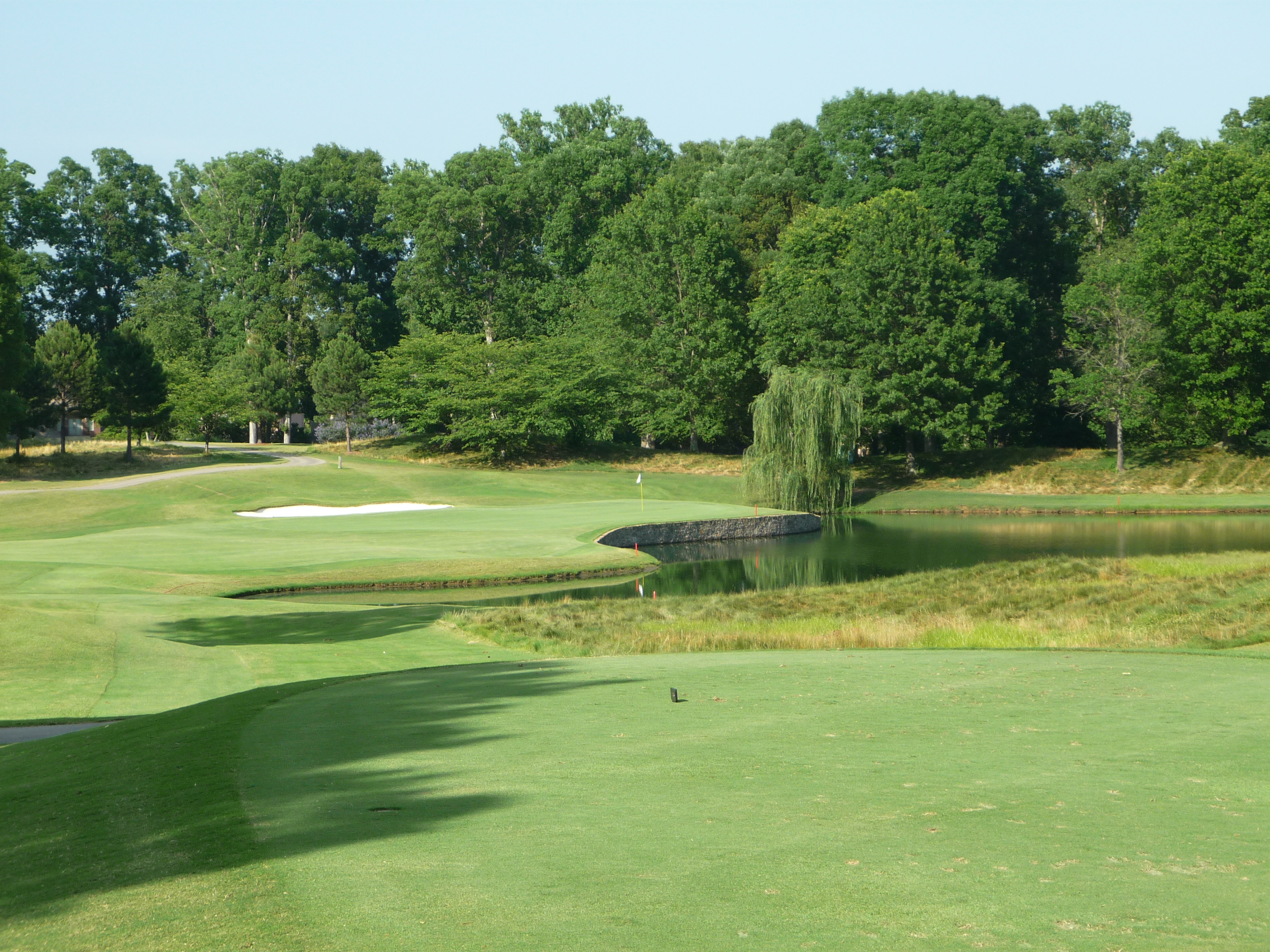
TPC Southwind – Played June 2018
- Rankings: None of the four lists
- Location: 3325 Club at Southwind, Memphis, Tennessee
- Year: 1970
- Architect: Ron Prichard
- Course Access: Private
- Walking Rules: Carts Available
Score Card Information:
- PGA Tour: 7,230 yards, Par 70, 75.6 Rating/145 Slope
- Tournament: 6,748 yards, Par 71, 73.4 Rating/140 Slope
- Mixed: 6,523 yards, Par 71, 72.3 Rating/138 Slope
- Players: 6,244 yards, Par 71, 71.1 Rating/134 Slope
- Blended: 5,947 yards, Par 71, 69.3 Rating/133 Slope
- Club – Men: 5,685 yards, Par 71, 68.7 Rating/127 Slope
- Club – Ladies: 5,685 yards, Par 72, 74.6 Rating/132 Slope
- Forward: 5,094 yards, Par 72, 71.3 Rating/131 Slope
- Family: 2,790 yards, Par N/A, Not Rated
Some social media serendipity would lead to me heading to the Memphis area for some golf. I had been in contact with passionate_golfer on Instagram for a little while. We have a mutual interest in golf travel and great courses. After we talked a bit a trip started to come together.
Our itinerary would see us head to TPC Southwind (obviously), as well as Old Waverly, Mossy Oak, and Sweeten’s Cove. I was understandably excited about the golf, but also for meeting new people. Also joining us on the trip would be virginiagolfguy and a friend of his.
For our first course on the trip we would be visiting TPC Southwind, the host of the FedEx St. Jude Classic. Starting in 2019, the tournament will be contested as a World Golf Championship (WGC) event for the Top 50 players in the world.
The course is situated just outside Memphis basically next to FedEx world headquarters, hence the sponsorship. I did want to make one note about the architect, Ron Prichard. He has a reputation as a Donald Ross resotration artist. With influences like Ross, Raynor, Tillinghast, and Flynn I was excited to check the course out.
You’ll notice above that there are a plethora of tee box options. We chose the Tournament tees and were off on a steamy Memphis afternoon.
Hole 1 – 405 yards – Par 4
The first shot of the day is not overly taxing. Trees encroach on the left, but well struck drives should carry them. A good line is down the left side of the fairway.
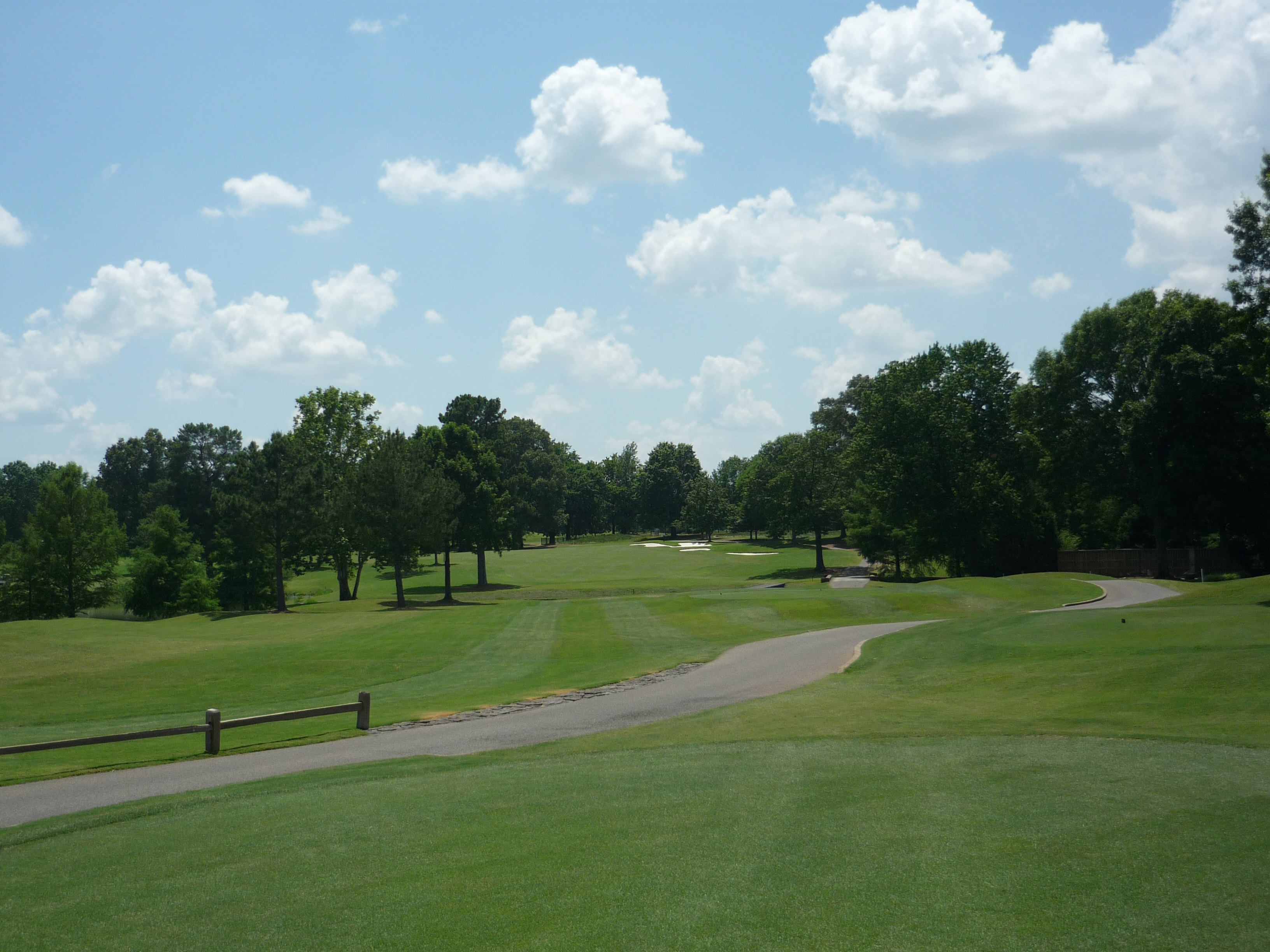
The second shot plays uphill to a green backed by a large hill with heavy rough. Don’t go long!
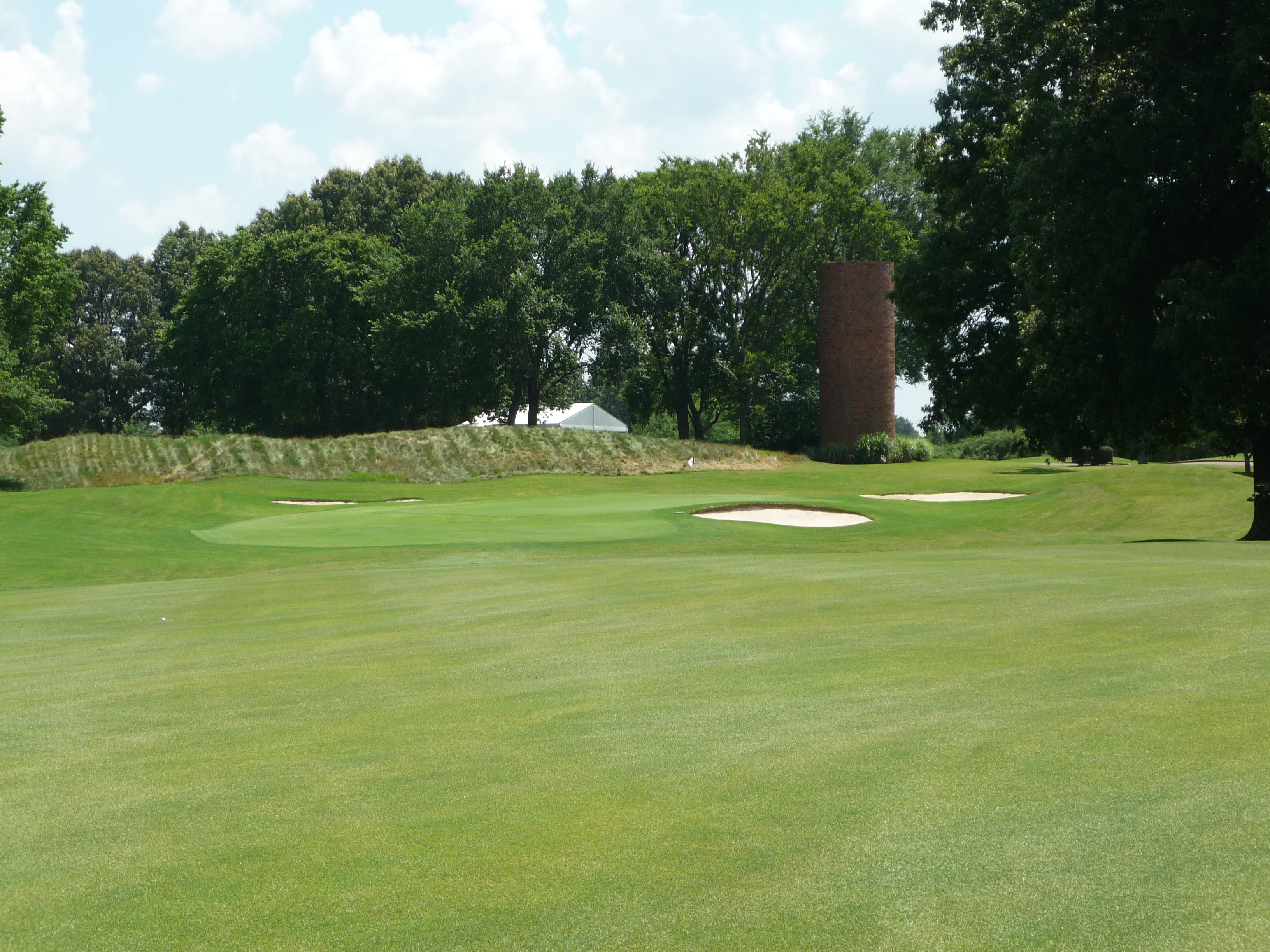
Below is a look at the putting surface from near the front bunker.
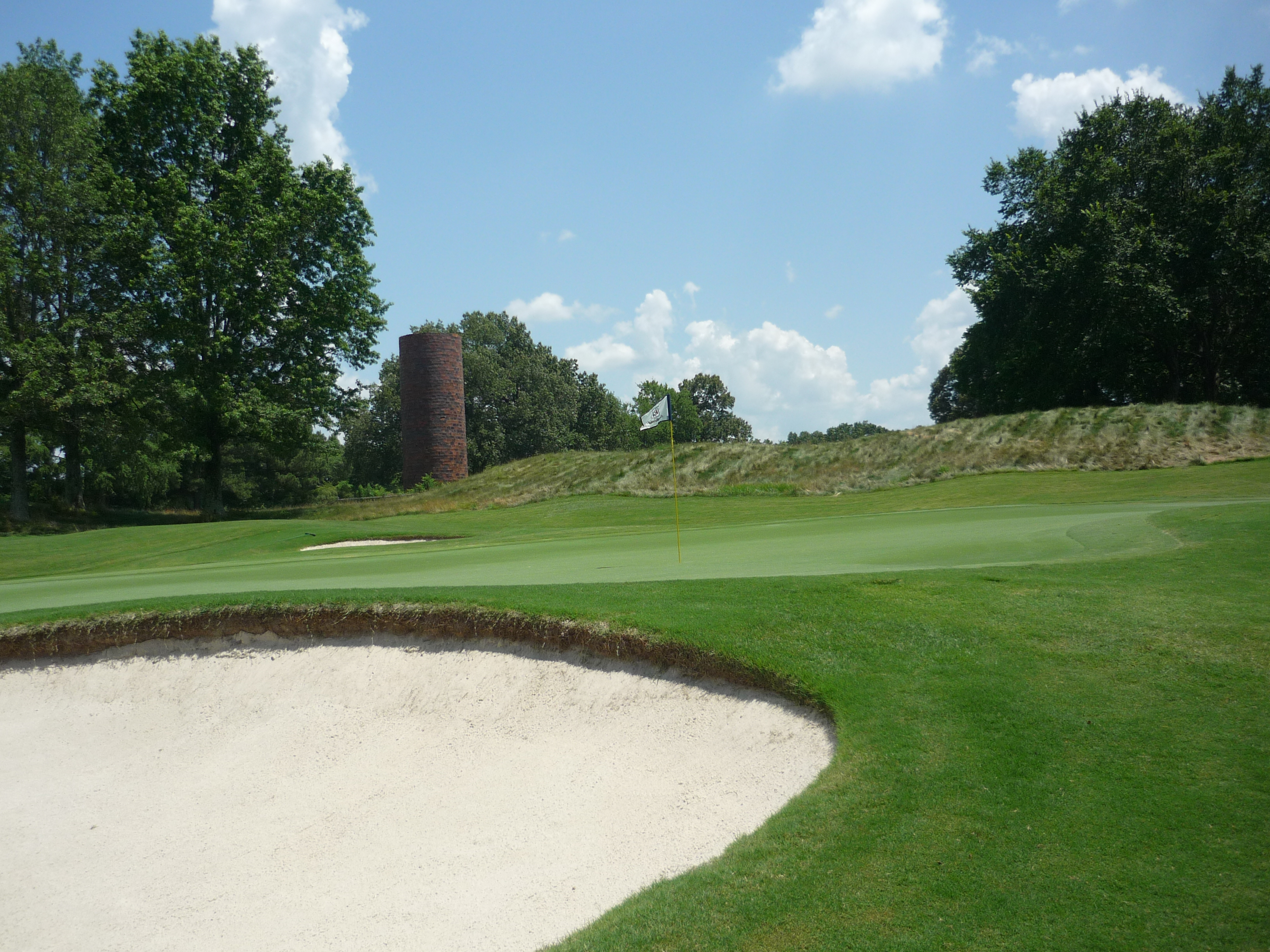
Hole 2 – 385 yards – Par 4
You’ll want a straight drive here through the trees. Nothing fancy, just put one in the fairway.
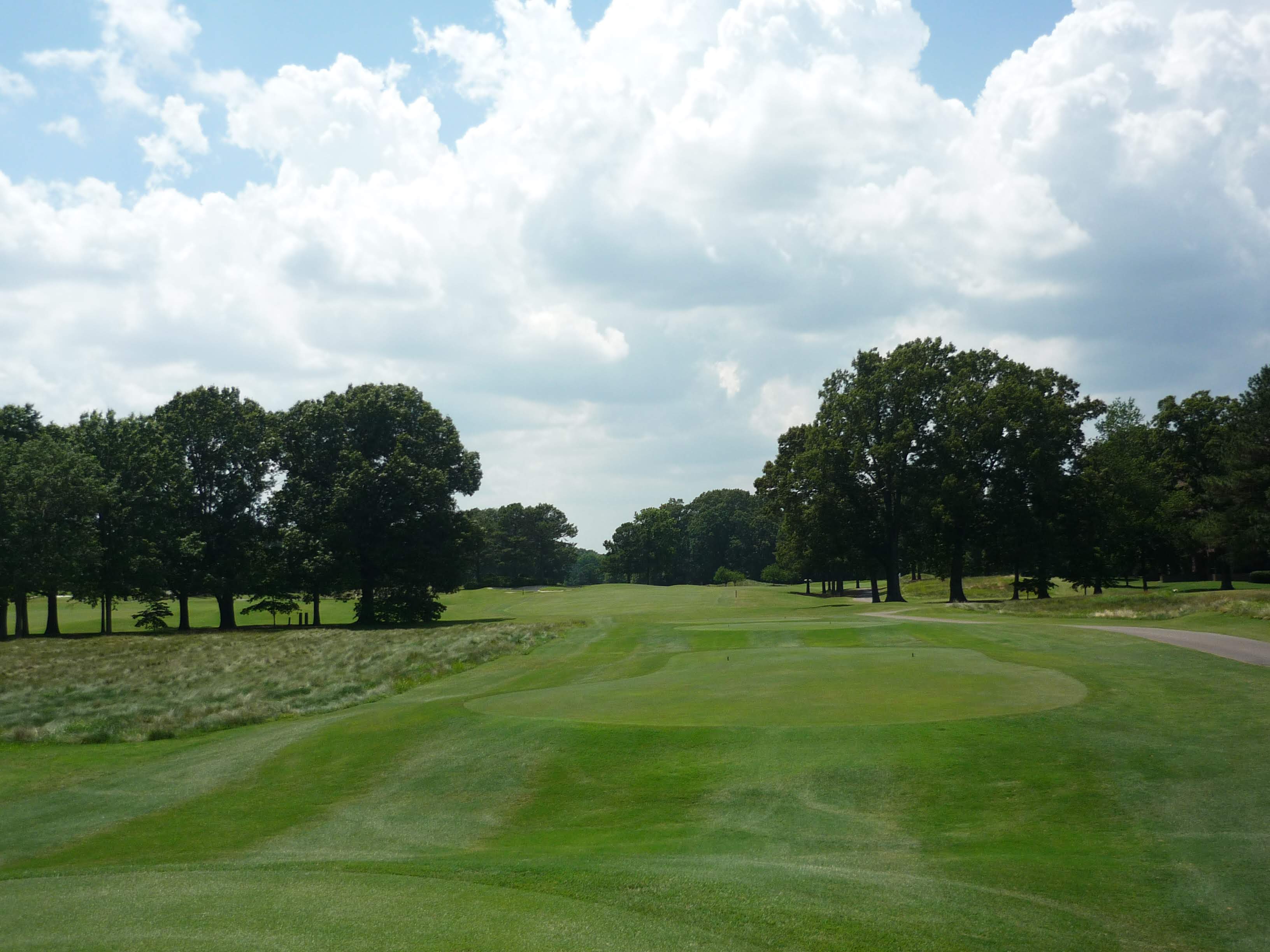
 The left side of the hole is guarded by sand and long grass, trust me. Below is the look at the green from that side.
The left side of the hole is guarded by sand and long grass, trust me. Below is the look at the green from that side.
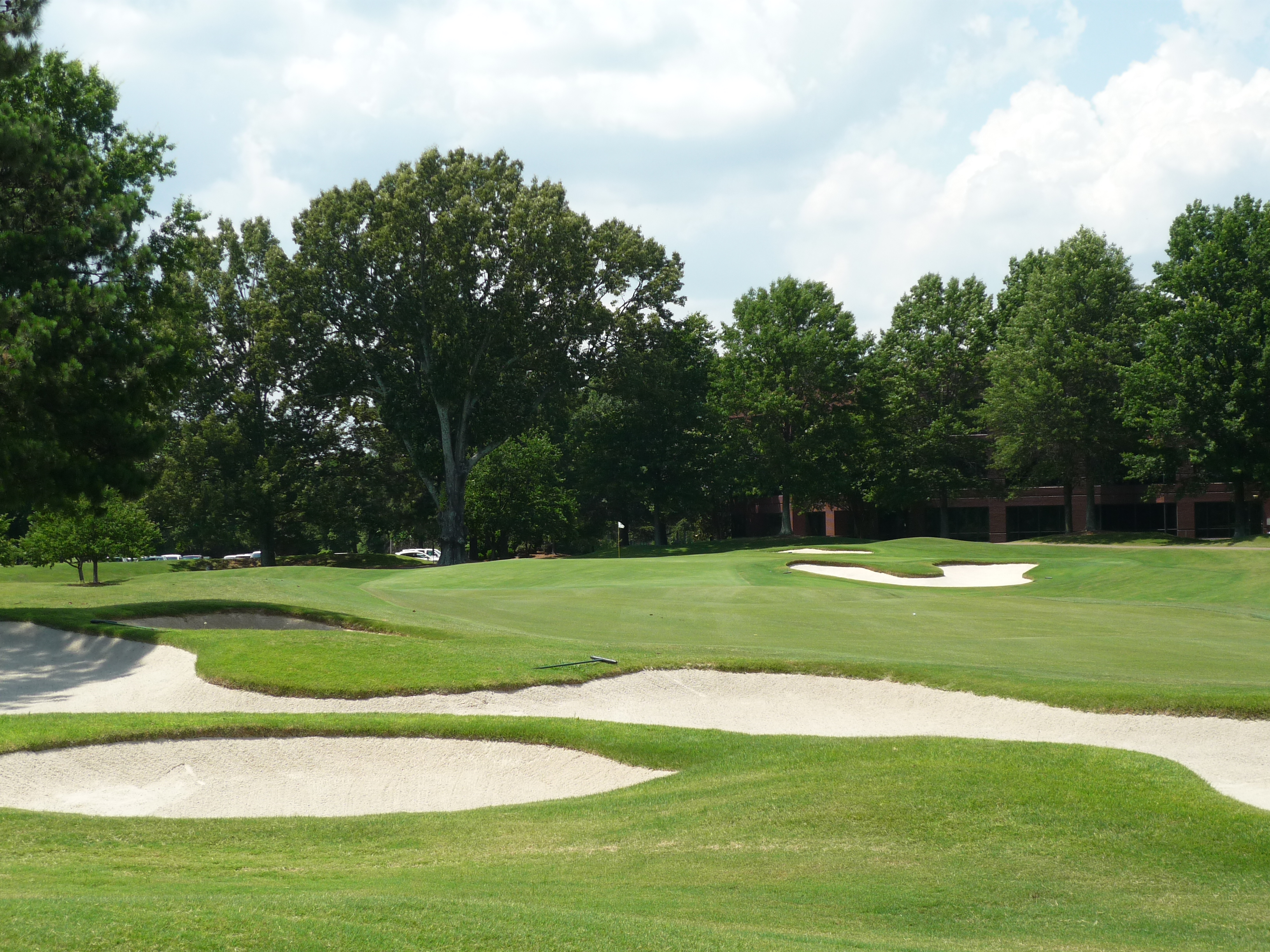
Here is a look at the green from behind. Notice the pro move of standing in the shade to take a picture. I wish I had known about Tiger changing shirts 15 times a round, I’d have brought more than one.
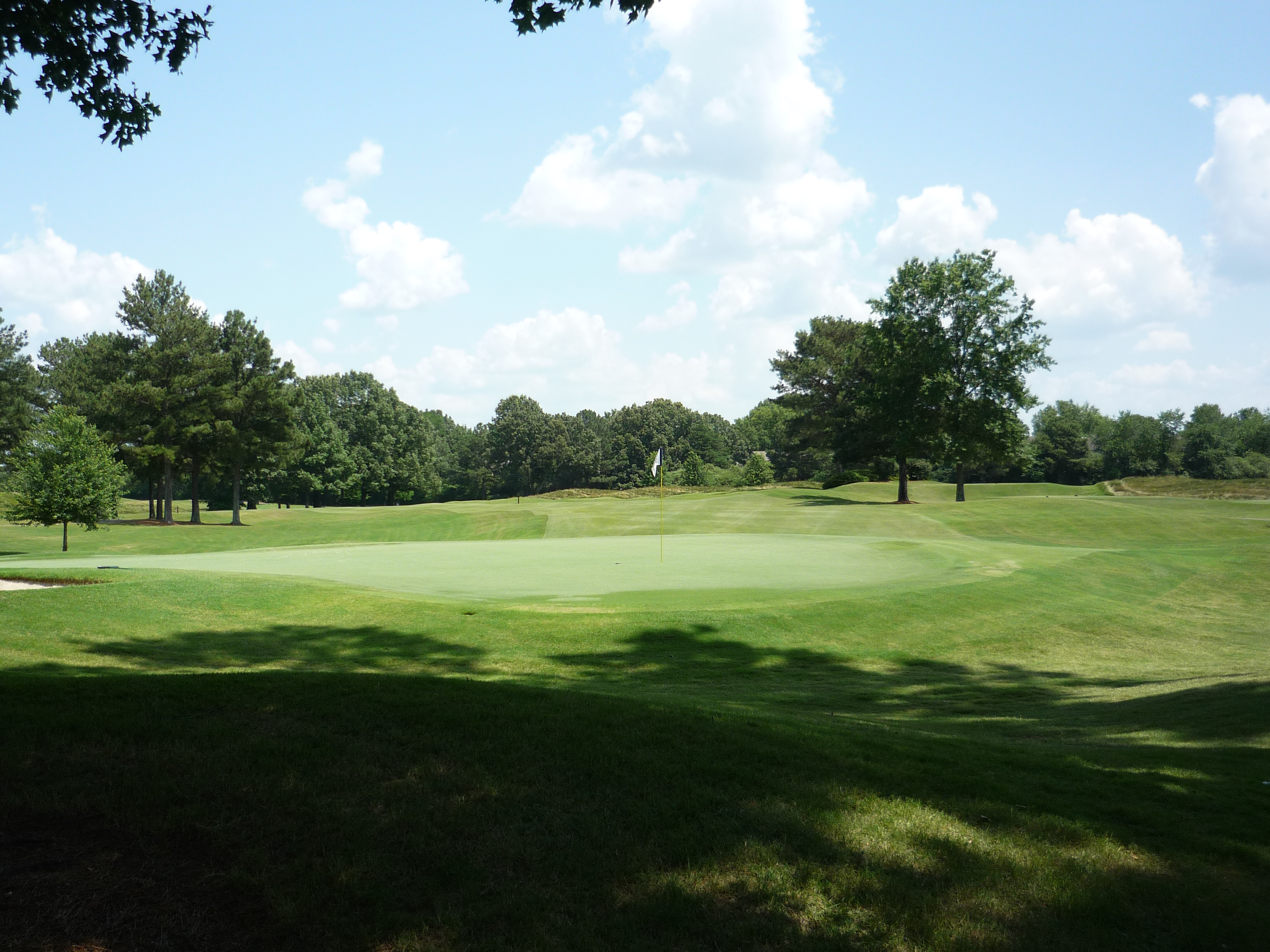
Hole 3 – 520 yards – Par 5
The goal here is to shoot a drive through the trees. Bigger hitters can go up over the trees on the left for a more aggressive line.
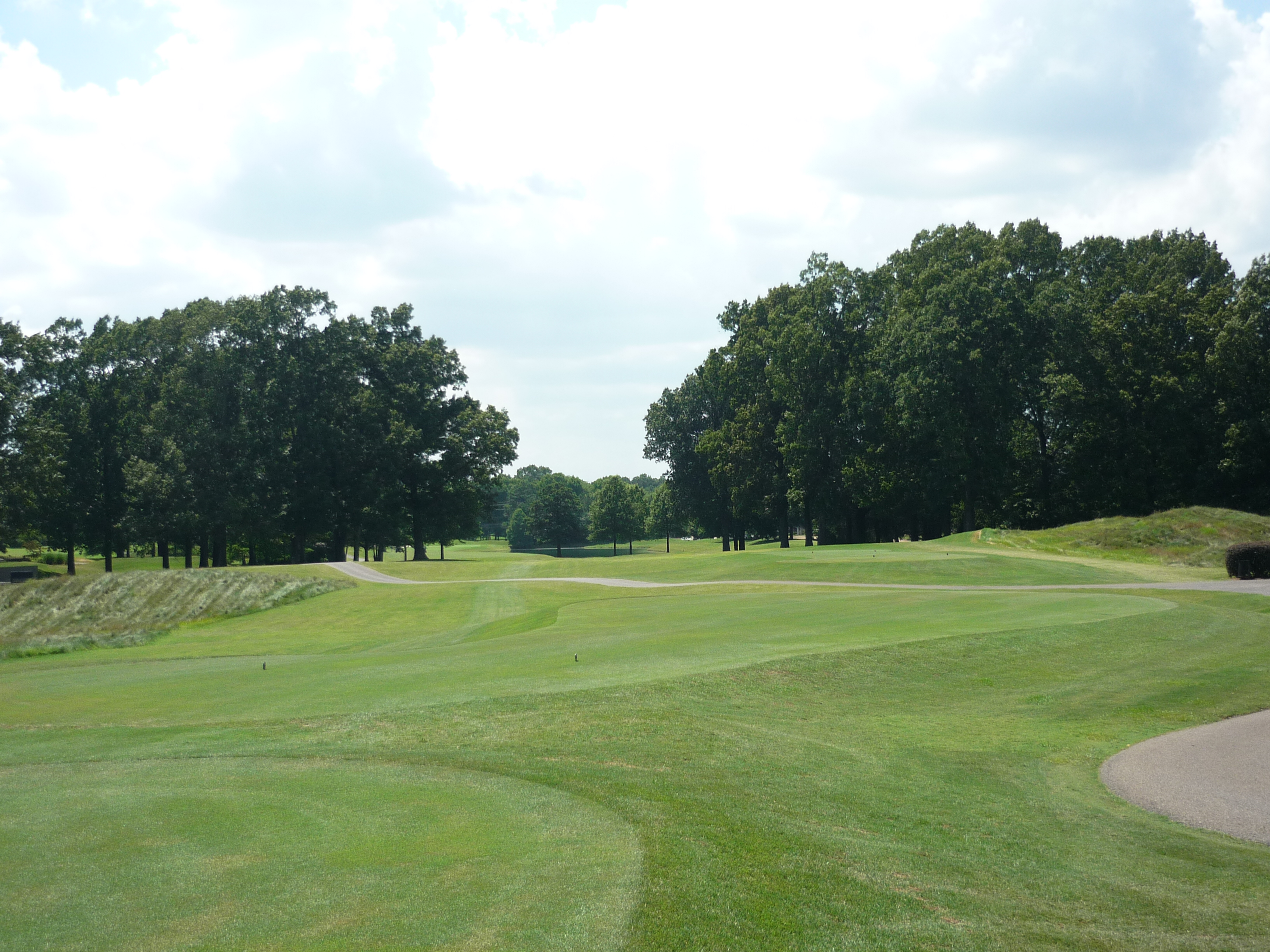
The water is the major obstacle on the second and third shots. If anything drifts right the water is in play.
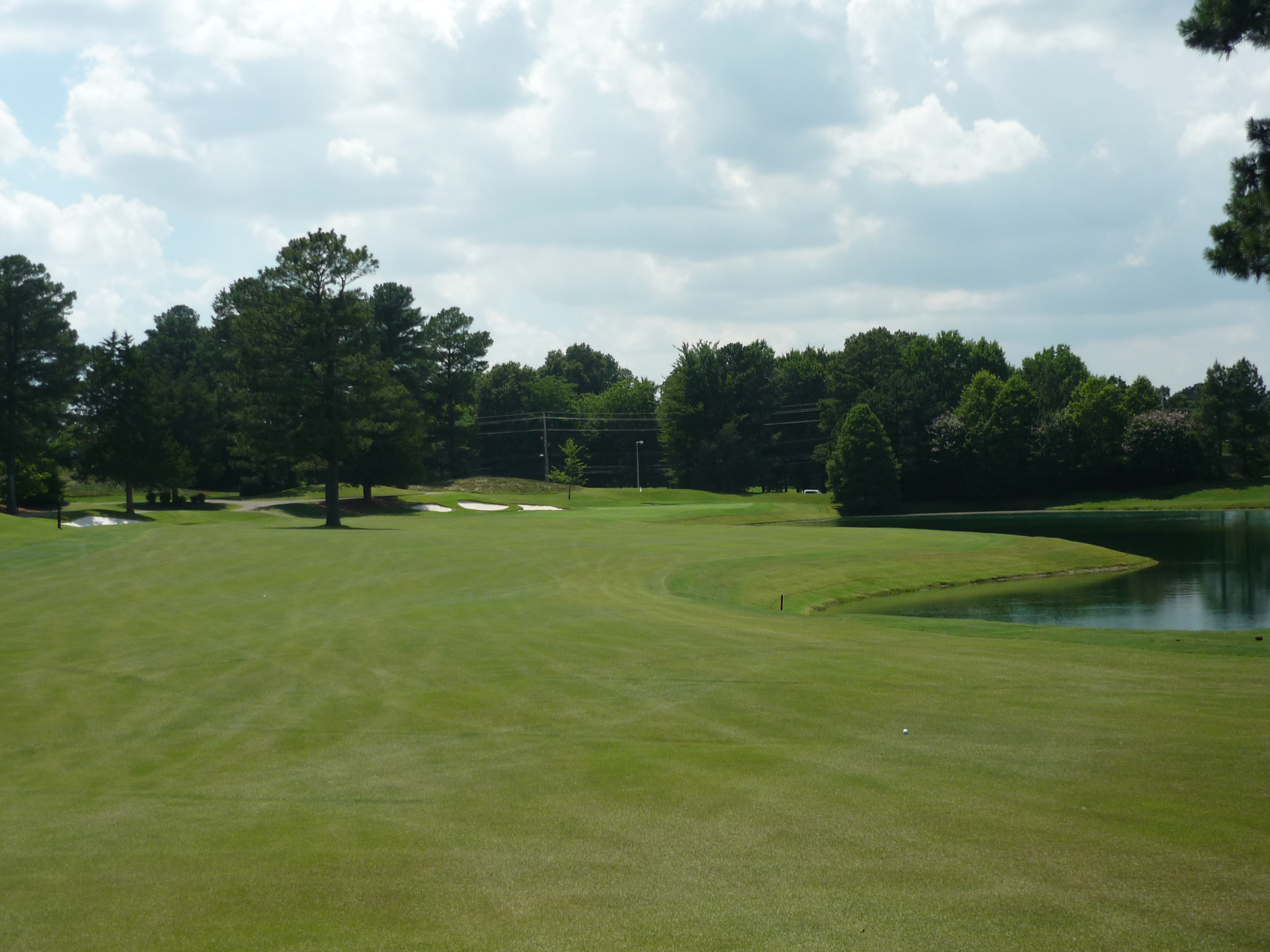
Here is the view from my third shot. It’s a green light from here with a wedge in your hand.
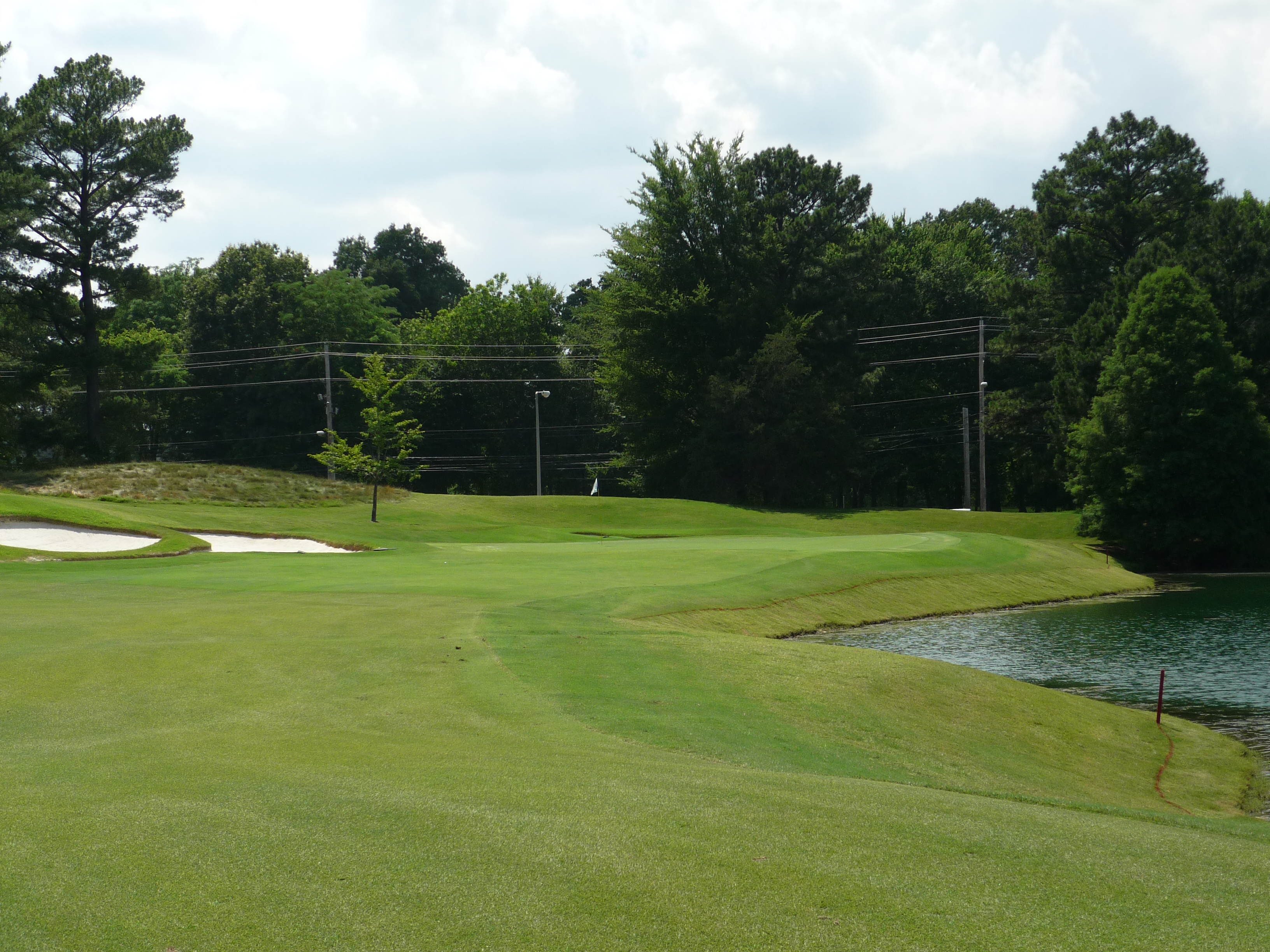
The green is not overly sloped, but does feature some collection areas.
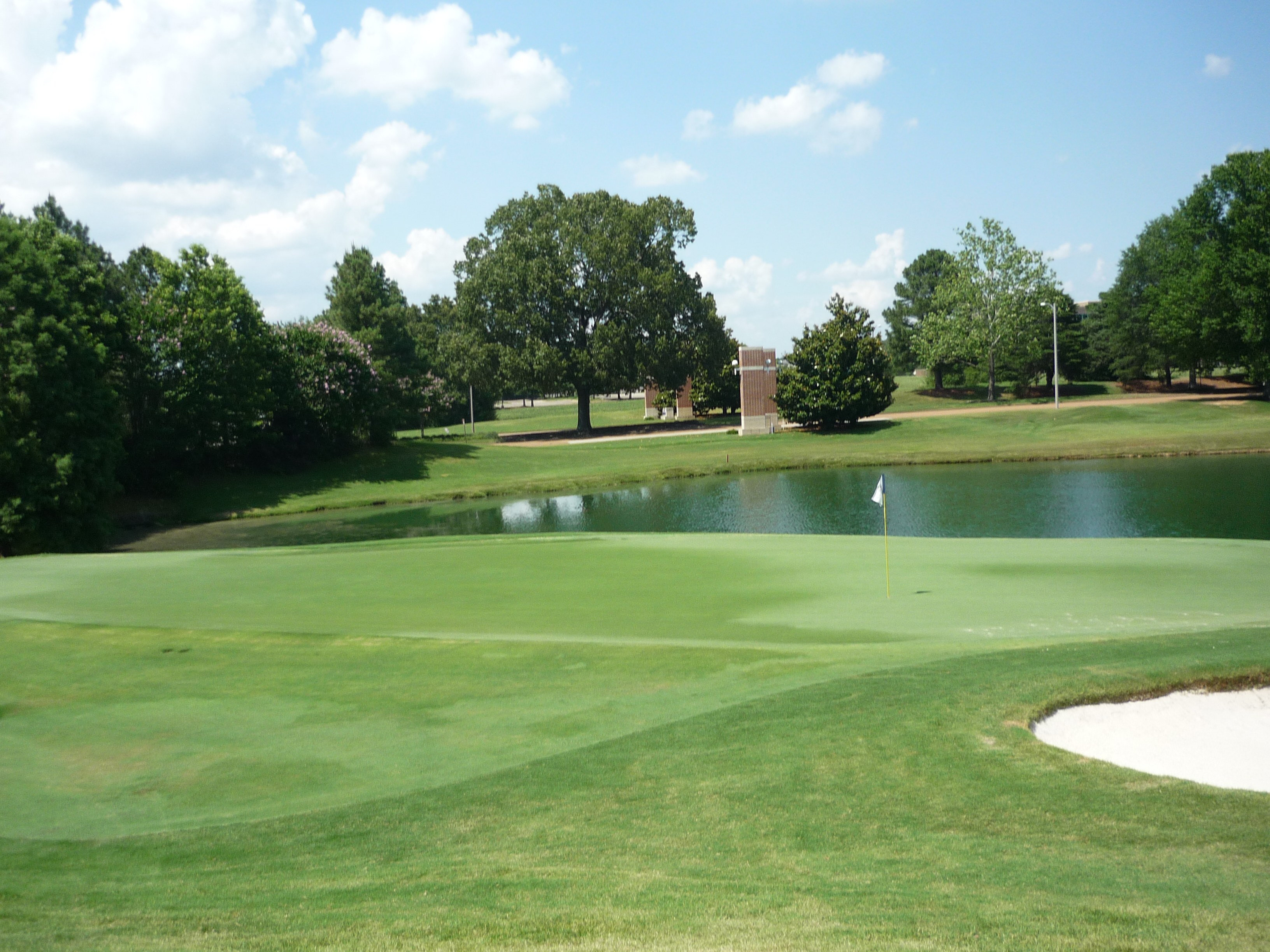
Hole 4 – 170 yards – Par 3
Beware the water short and left here, especially if there is a headwind. With the flag on the right, there is plenty of room to avoid the left side.
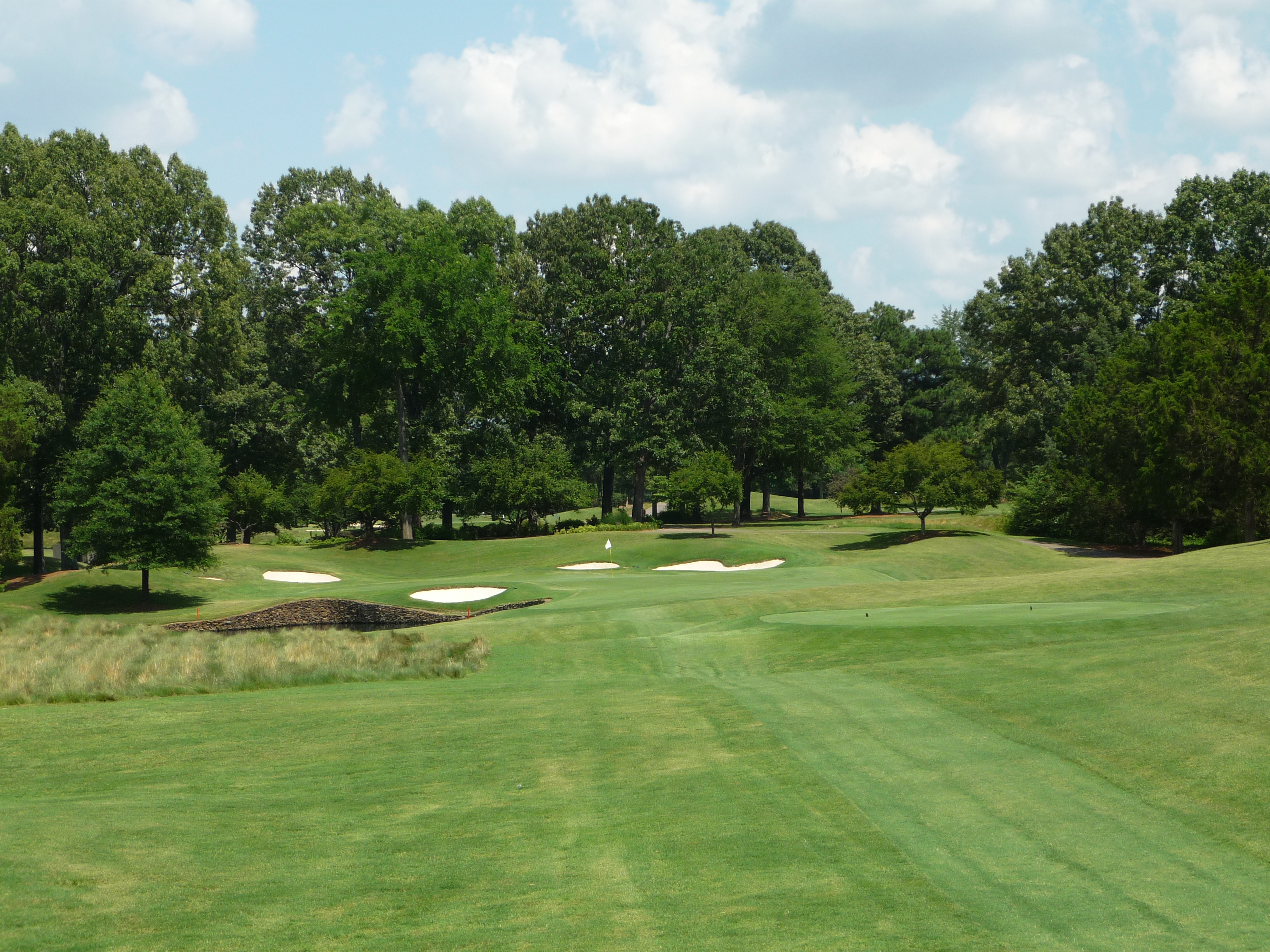
Here’s a look at the green.
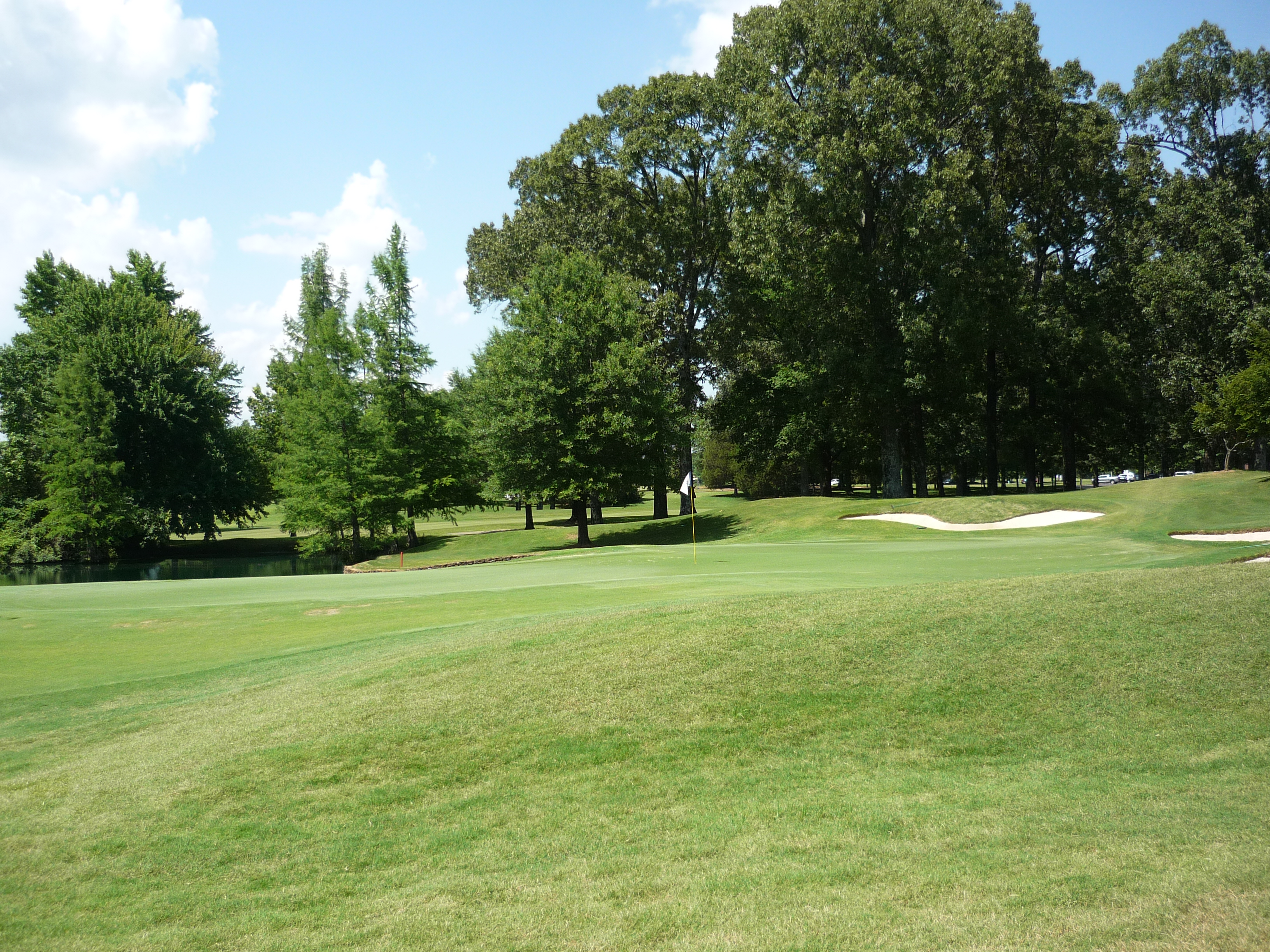
Hole 5 – 525 yards – Par 5
They could probably do with some tree management on this tee. It felt a bit claustrophobic. The tee shot needs to be hit pretty straight as you can see.
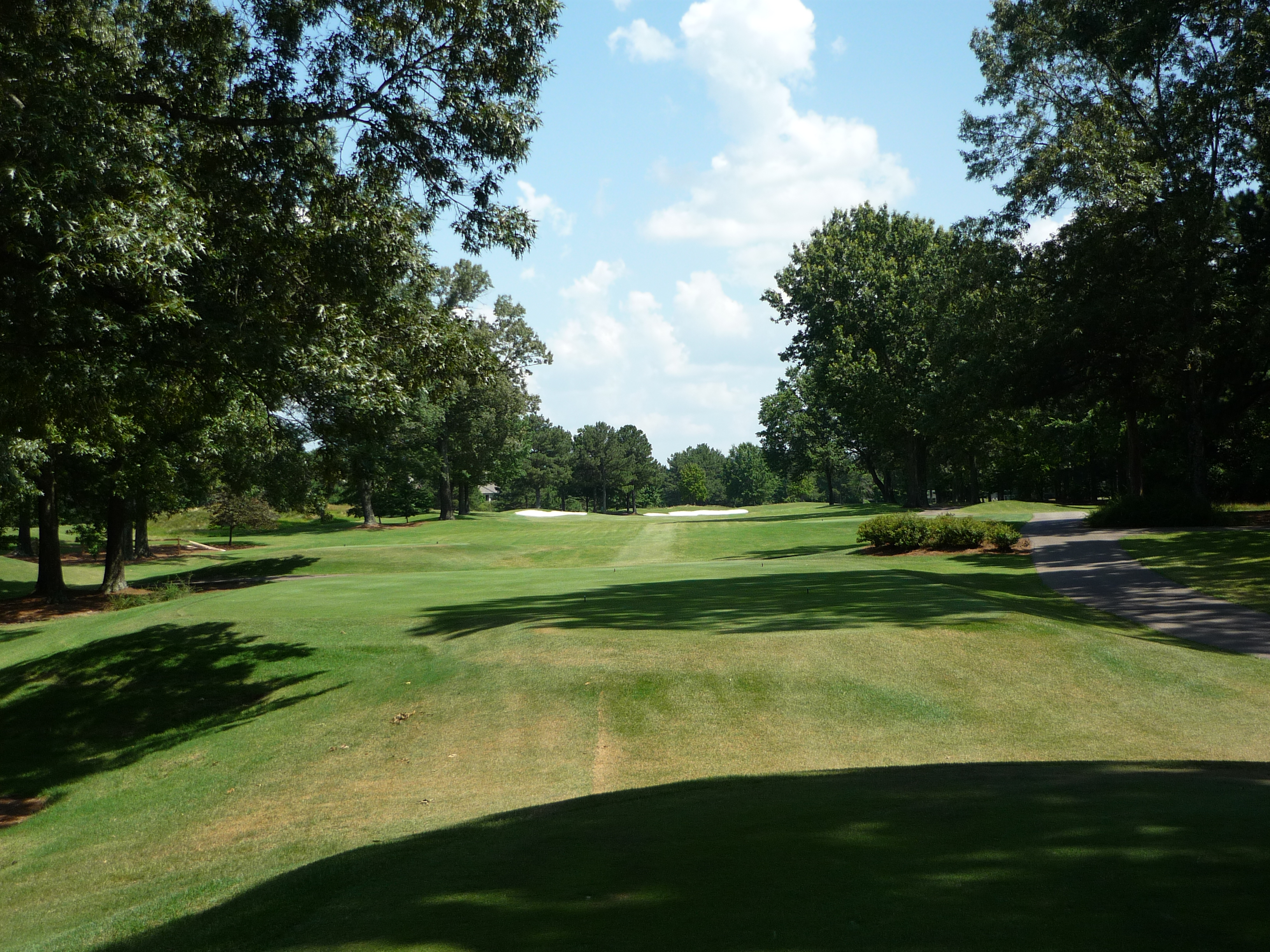
Below is a look at the second shot from the fairway. I didn’t get the rest of the hole, but the green is straightforward.
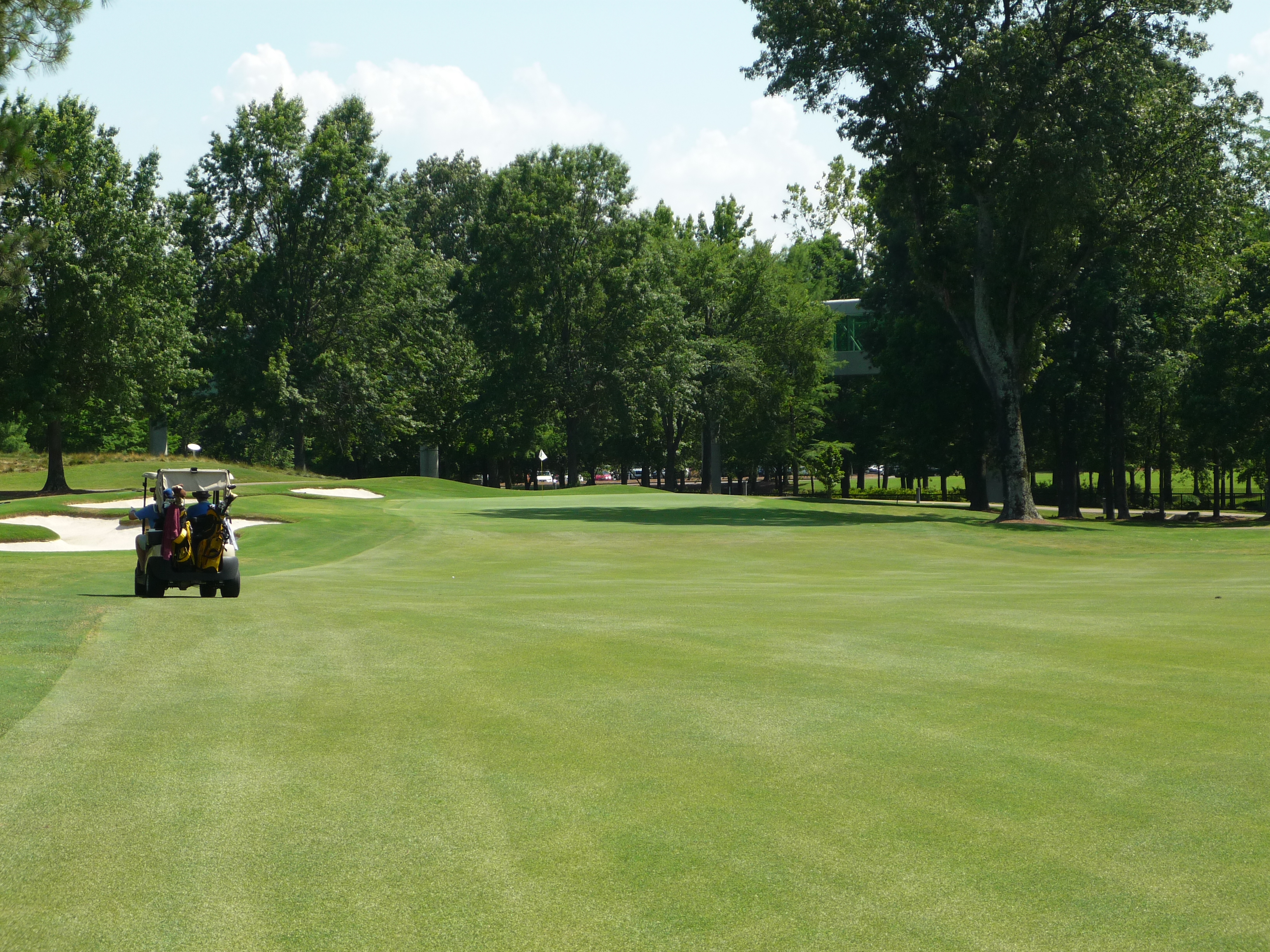
Hole 6 – 425 yards – Par 4
Playing slightly downhill from the tee, this hole bends to the left. A good drive is necessary here as this hole is on the longer side.
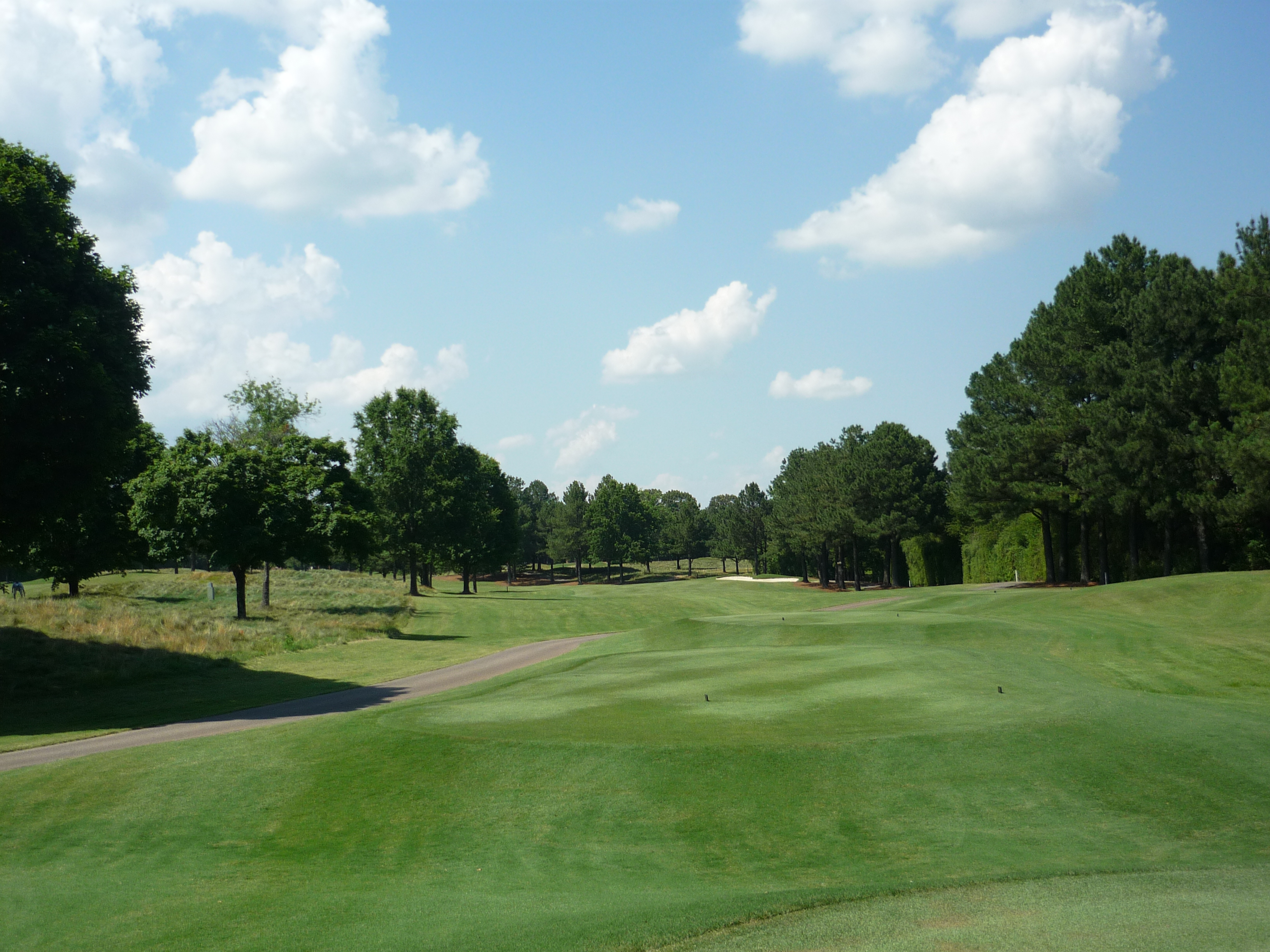
Below is a look at the approach shot. You can see that we go back uphill to the green. There isn’t much in the way of challenge here other than hitting a good shot.
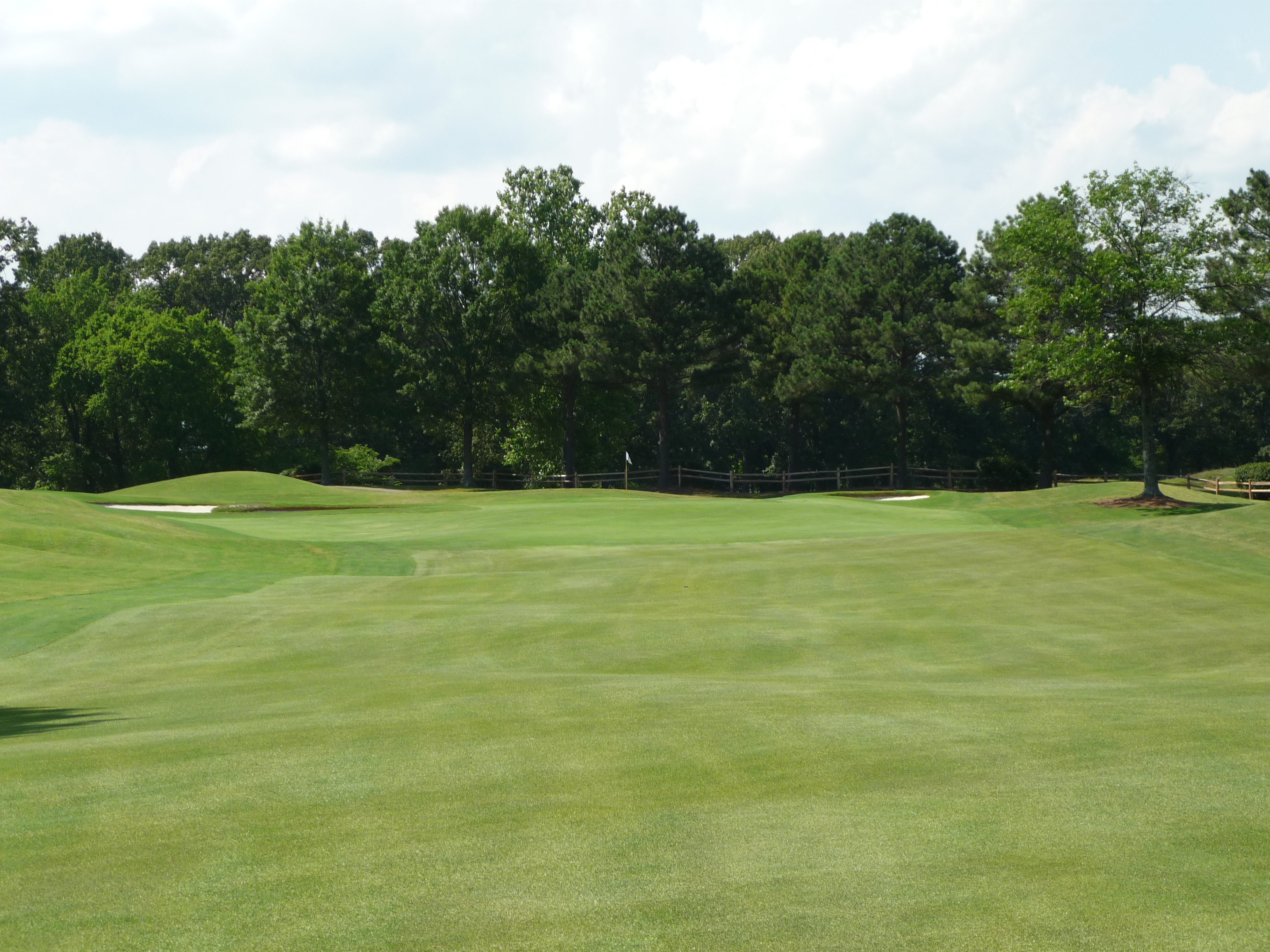
Hole 7 – 428 yards – Par 4
Straightaway is the name of the game at seven. I didn’t like the trees to the right off of the tee as they didn’t serve much of a purpose. Avoid the bunker up the left.
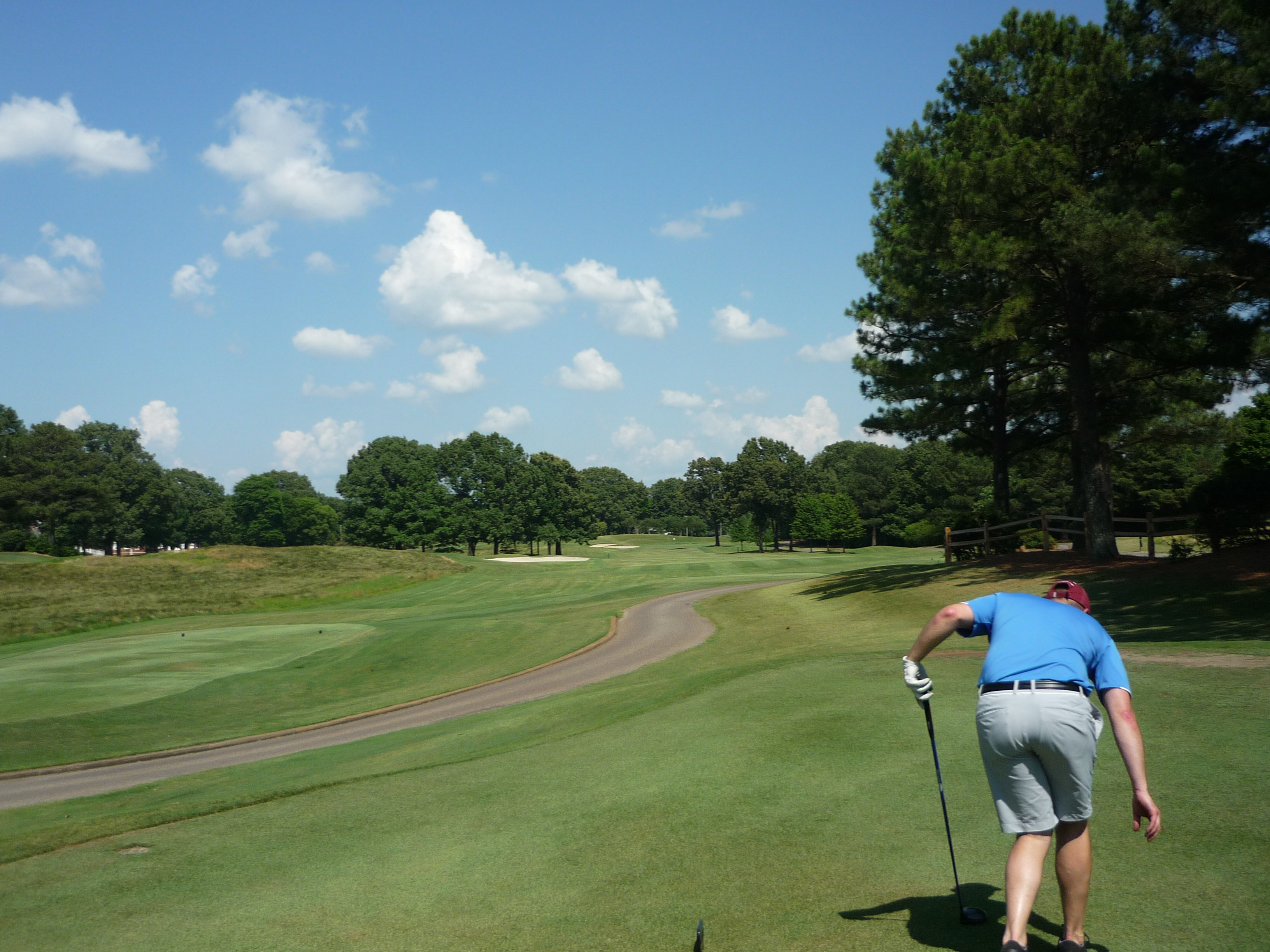
If you leave yourself on the right side of the hole you will face more tree trouble as seen below. I can see why so many golf course architecture enthusiasts are in favor of tree removal.
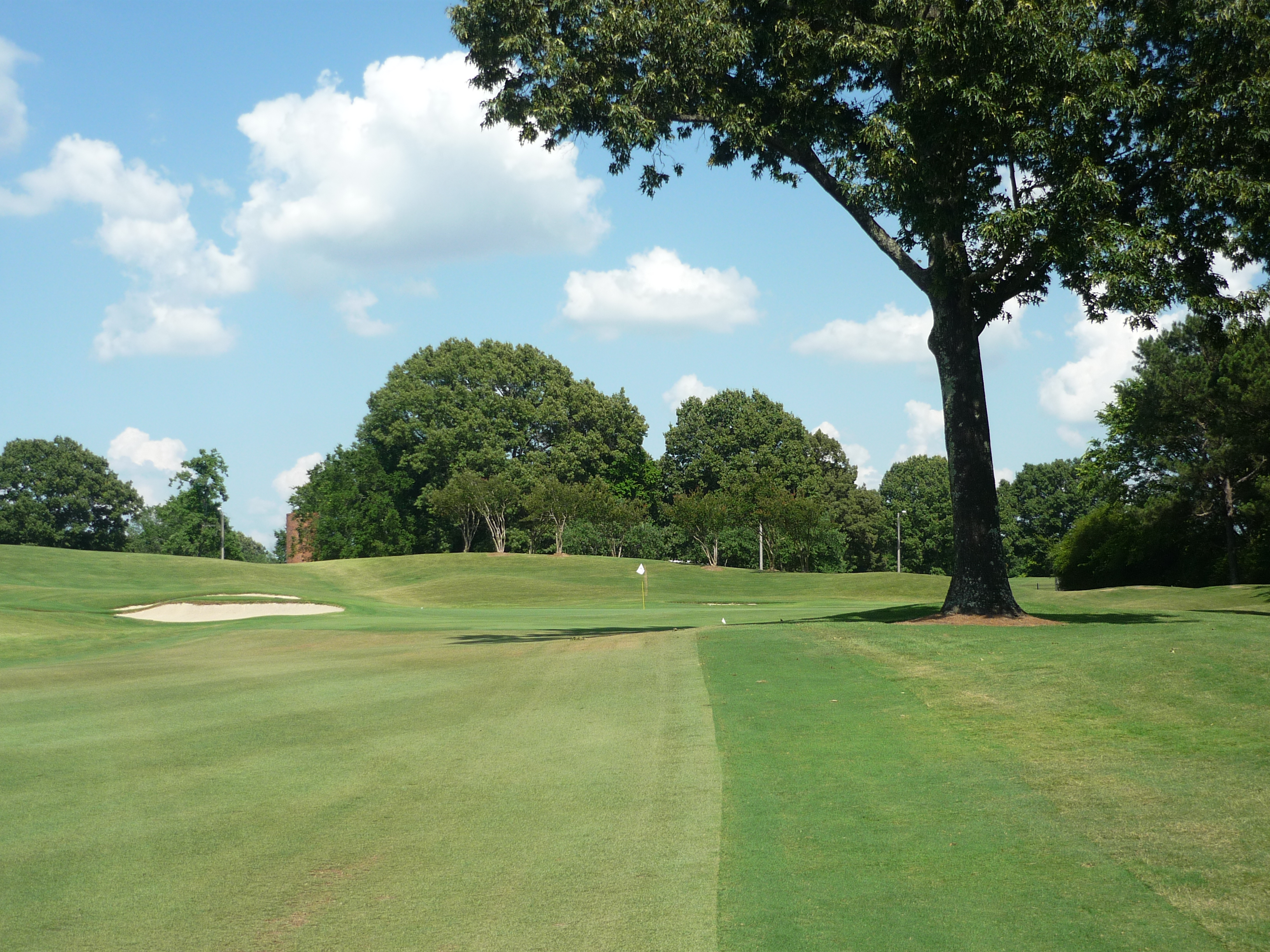
Hole 8 – 159 yards – Par 3
I liked this little hole. The look of the pushed up green with the bunkers was cool. You don’t want to miss long here.
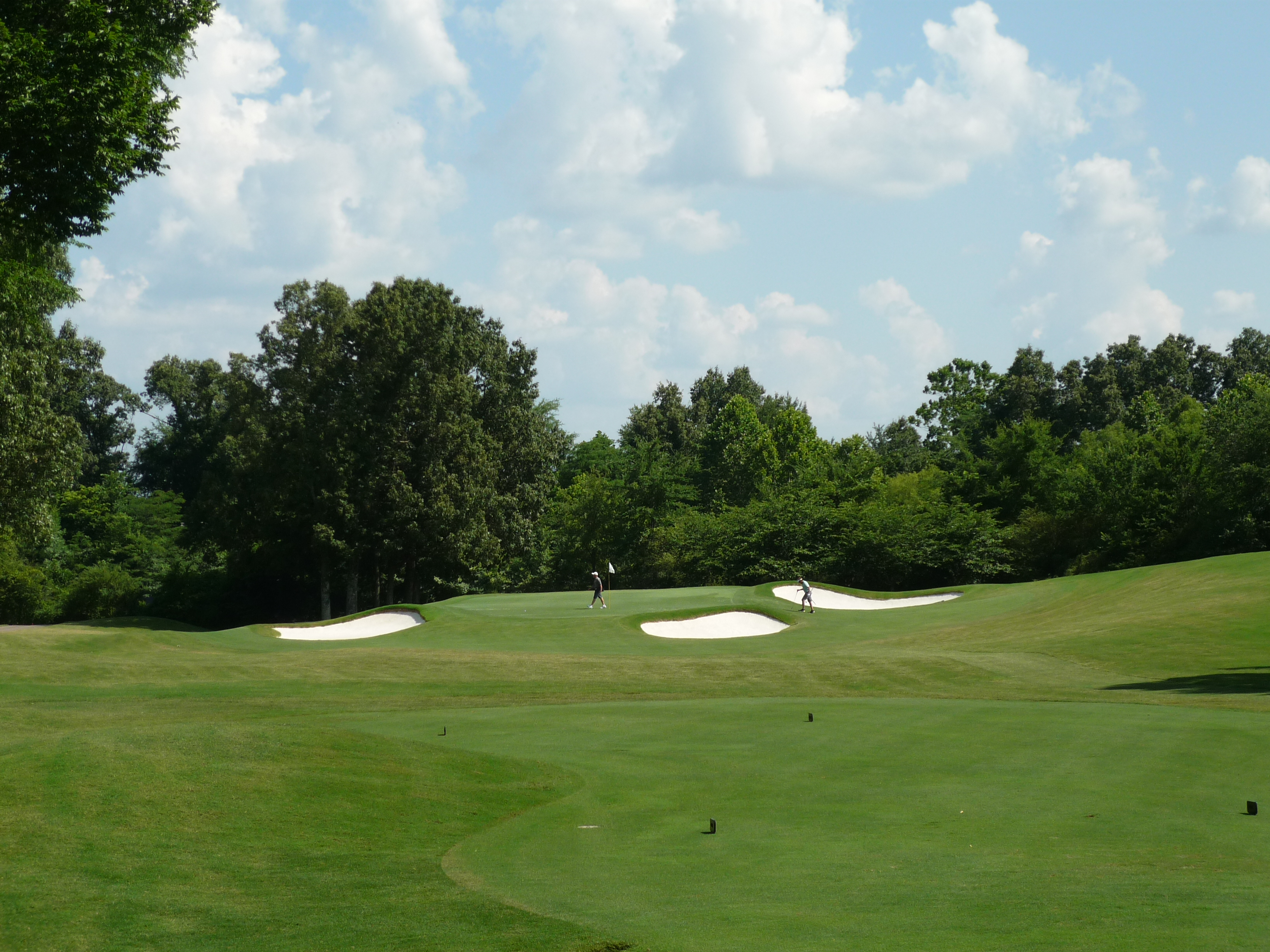
Hole 9 – 425 yards – Par 4
One cool aspect of the course were the old silos around the property. This one below was right next to the ninth hole.
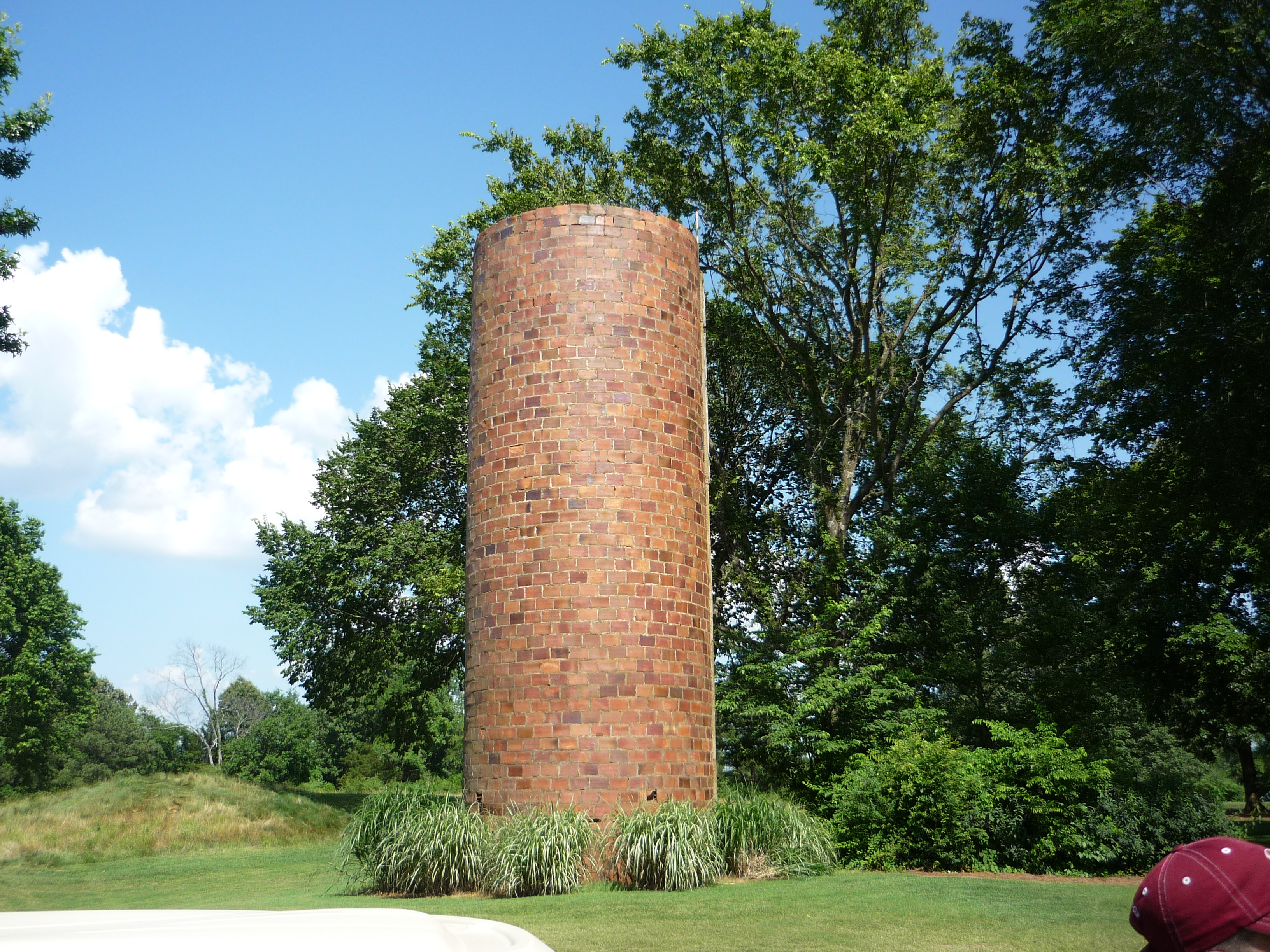
The general direction of the hole is a dogleg right, but the drive plays pretty straight since the dogleg happens way out there.
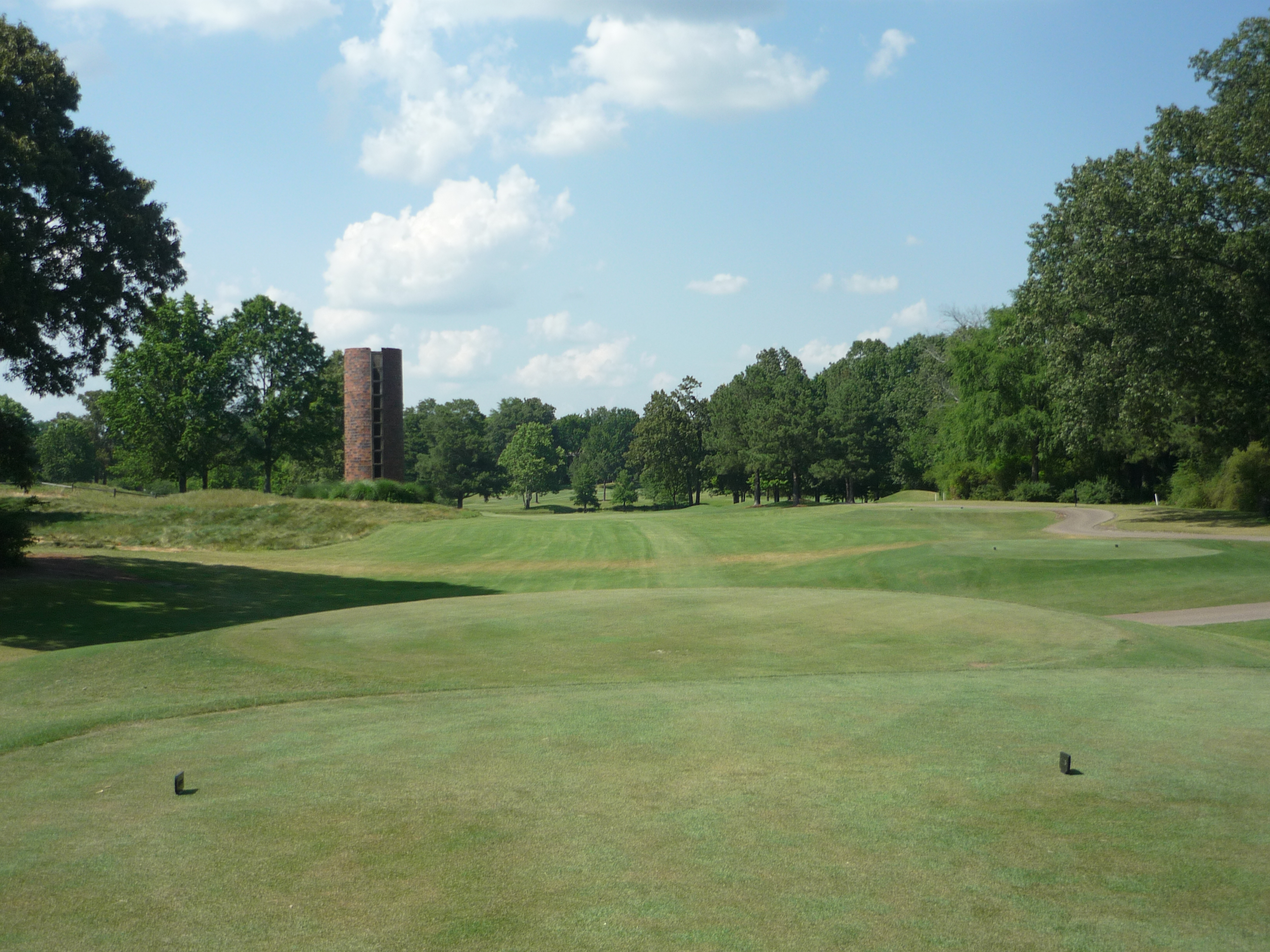
As you round the corner the green presents itself. If you are positioned in the left side of the fairway the water becomes more of a factor.
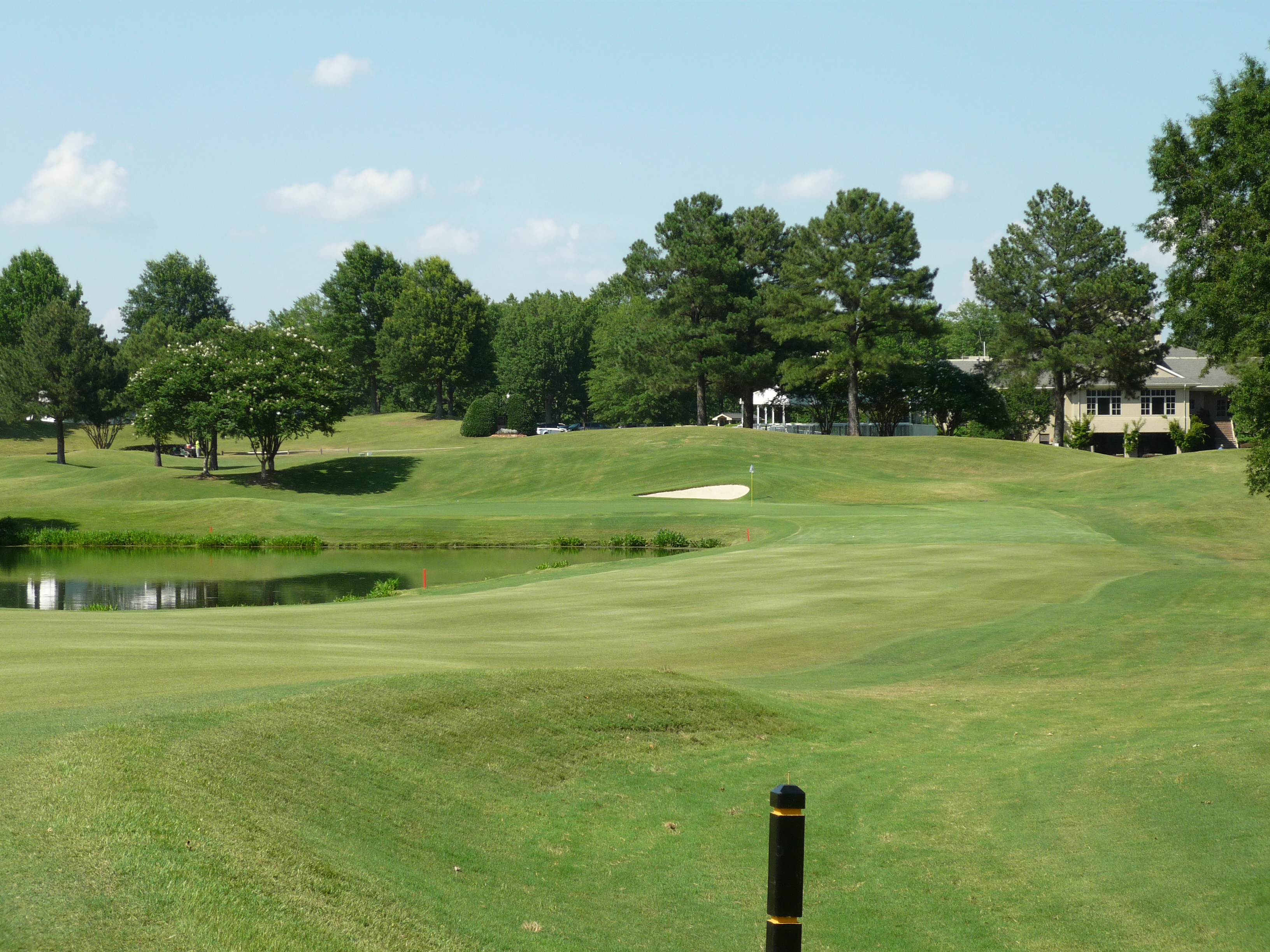
The putting surface is not big. Distance control is a must here.
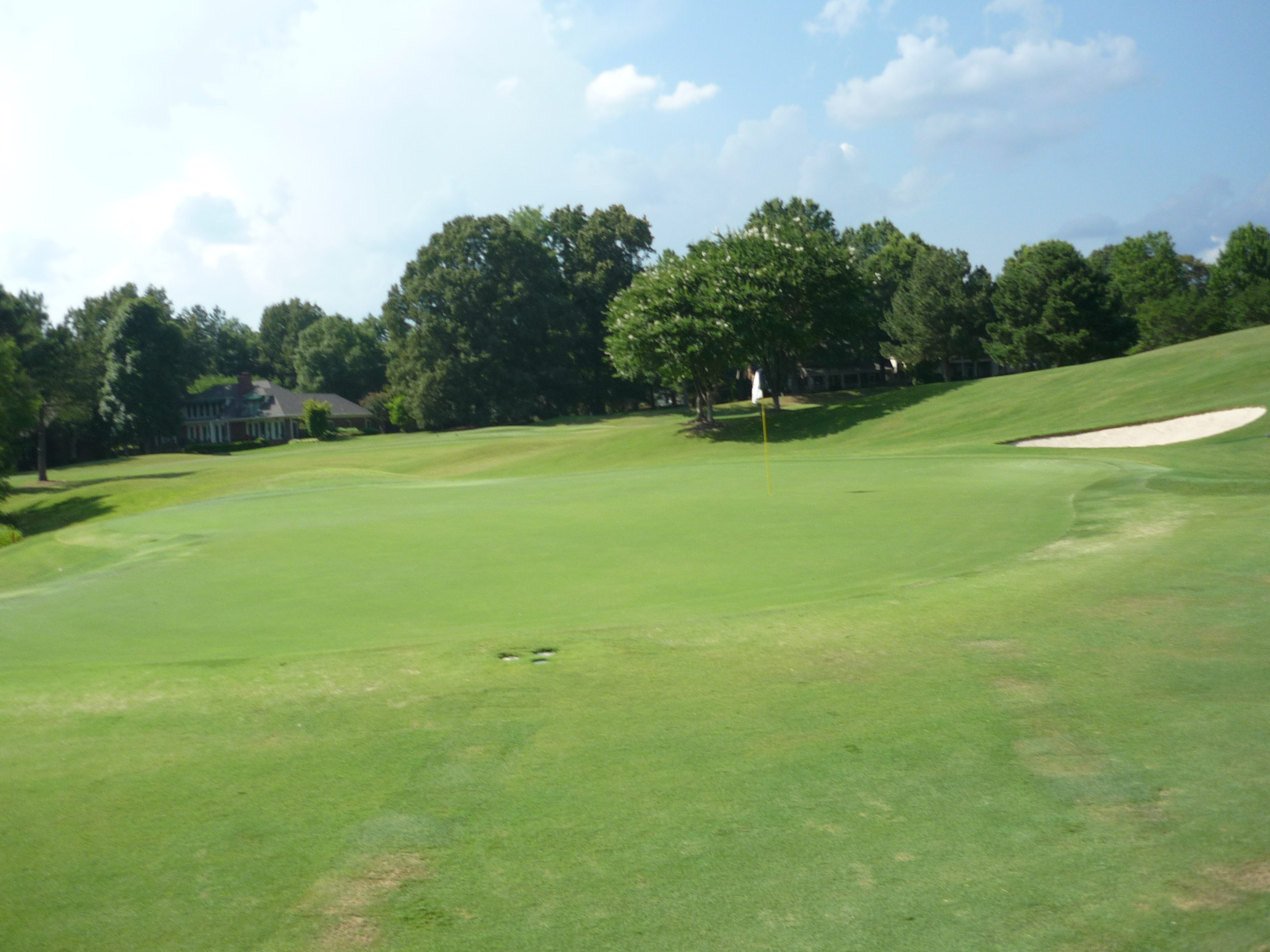
Hole 10 – 441 yards – Par 4
This feels like a tight tee shot with the trees on the left. Houses line that side as well and there isn’t too much room right. A good line is just left of the bunker seen on the right side.
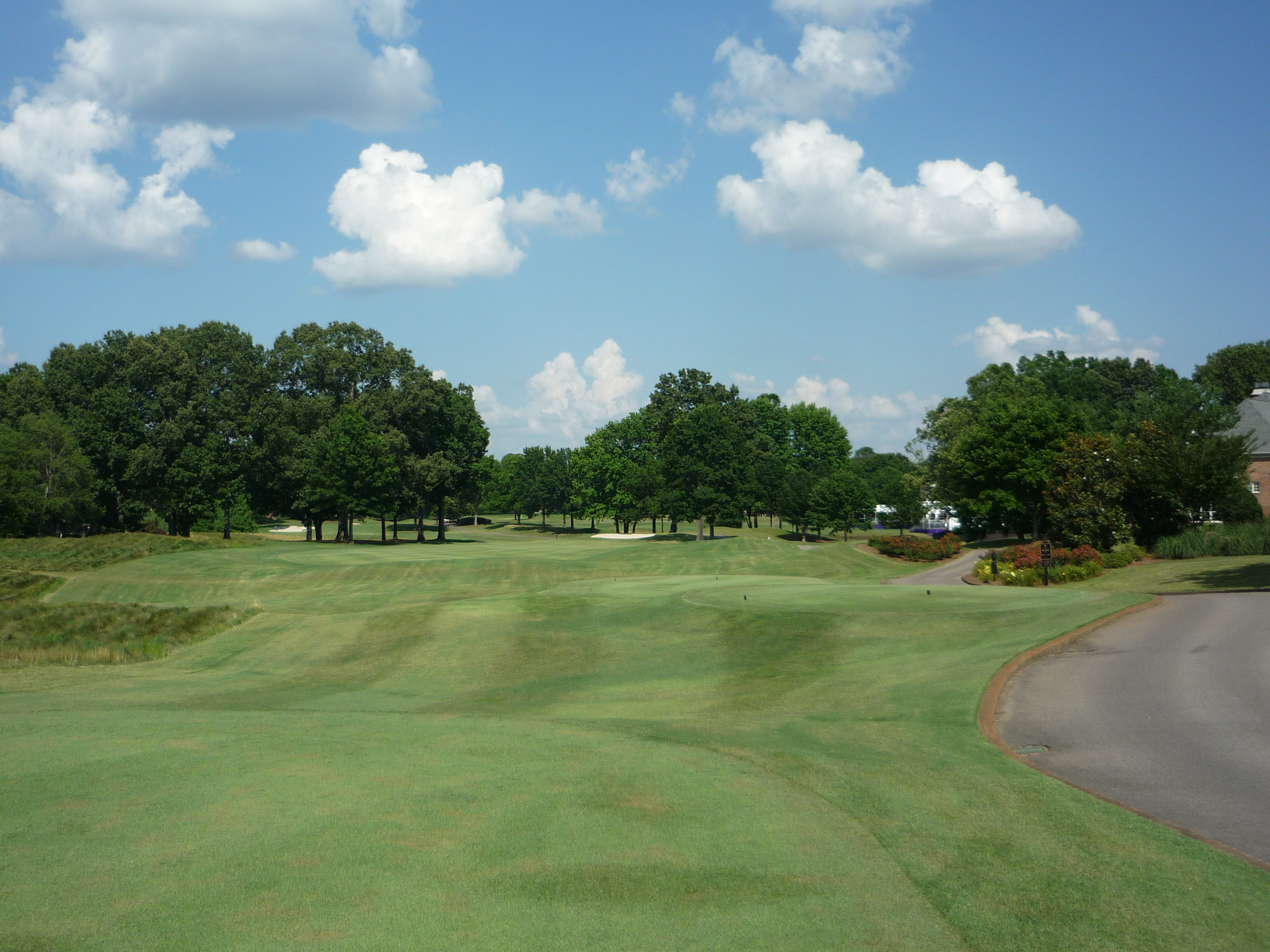
The second shot plays over a small creek to a slightly elevated green. Be sure to avoid the massive bunker on the left.
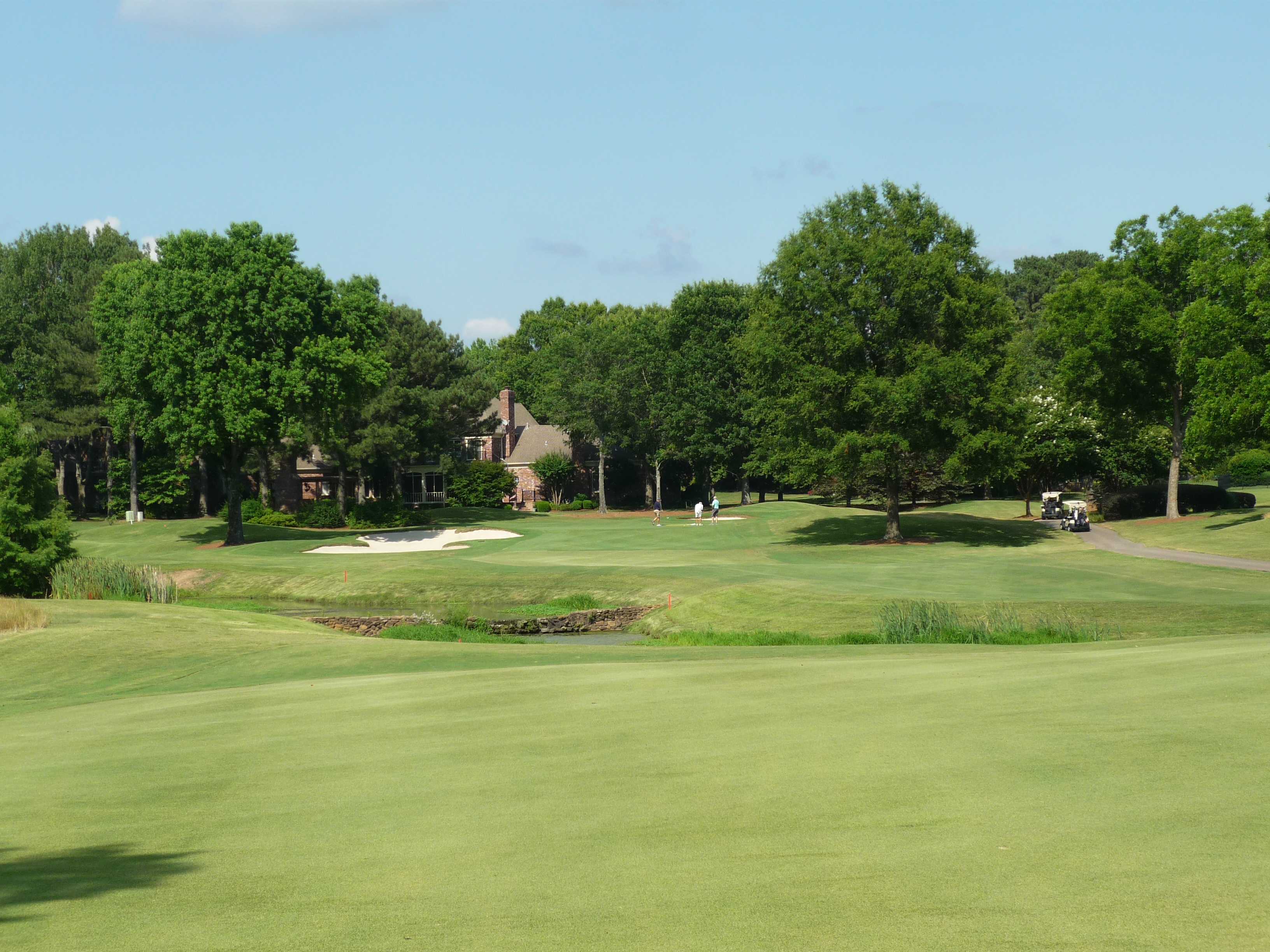
Here’s another angle.
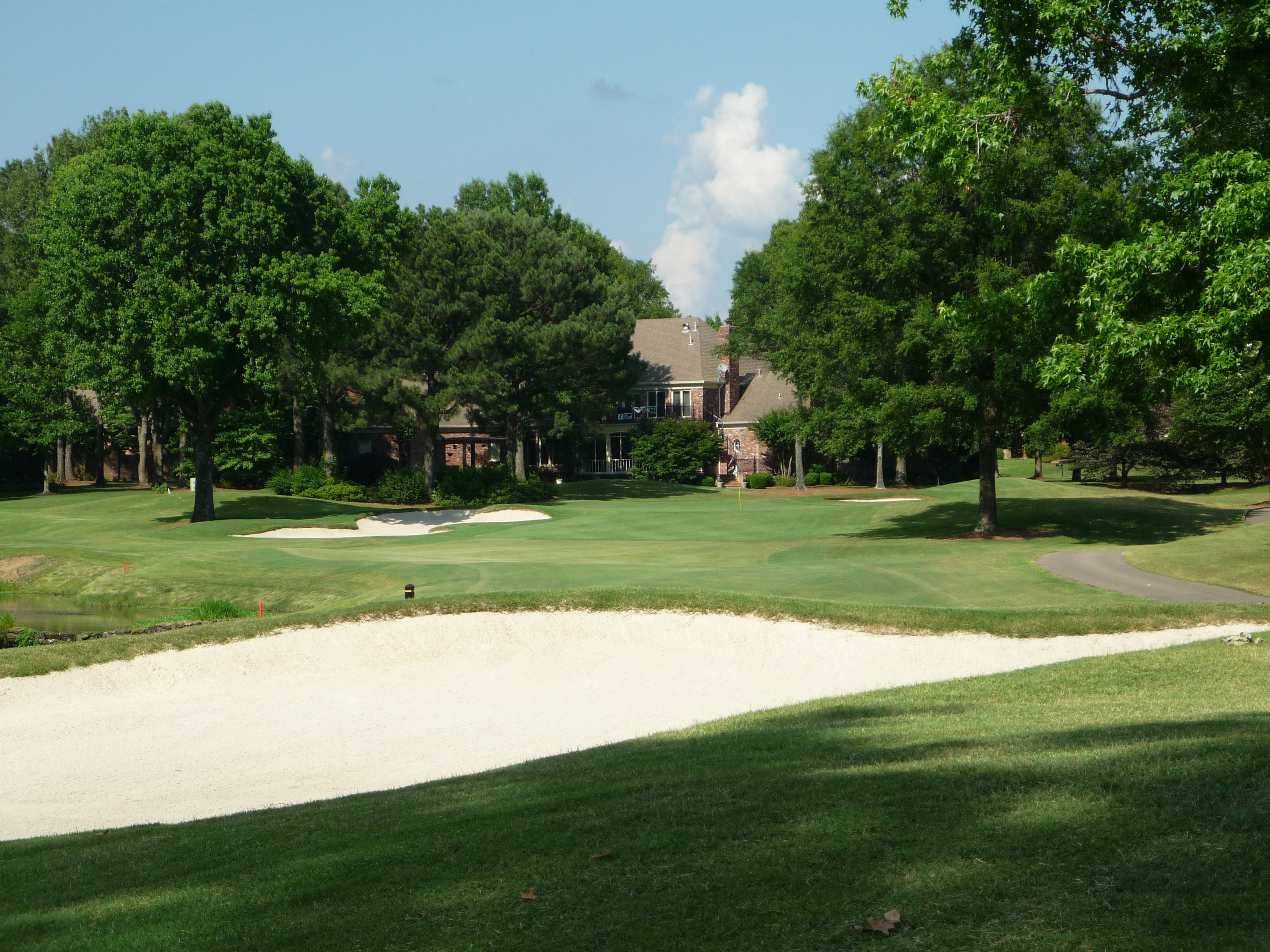
And a closer look at the green.
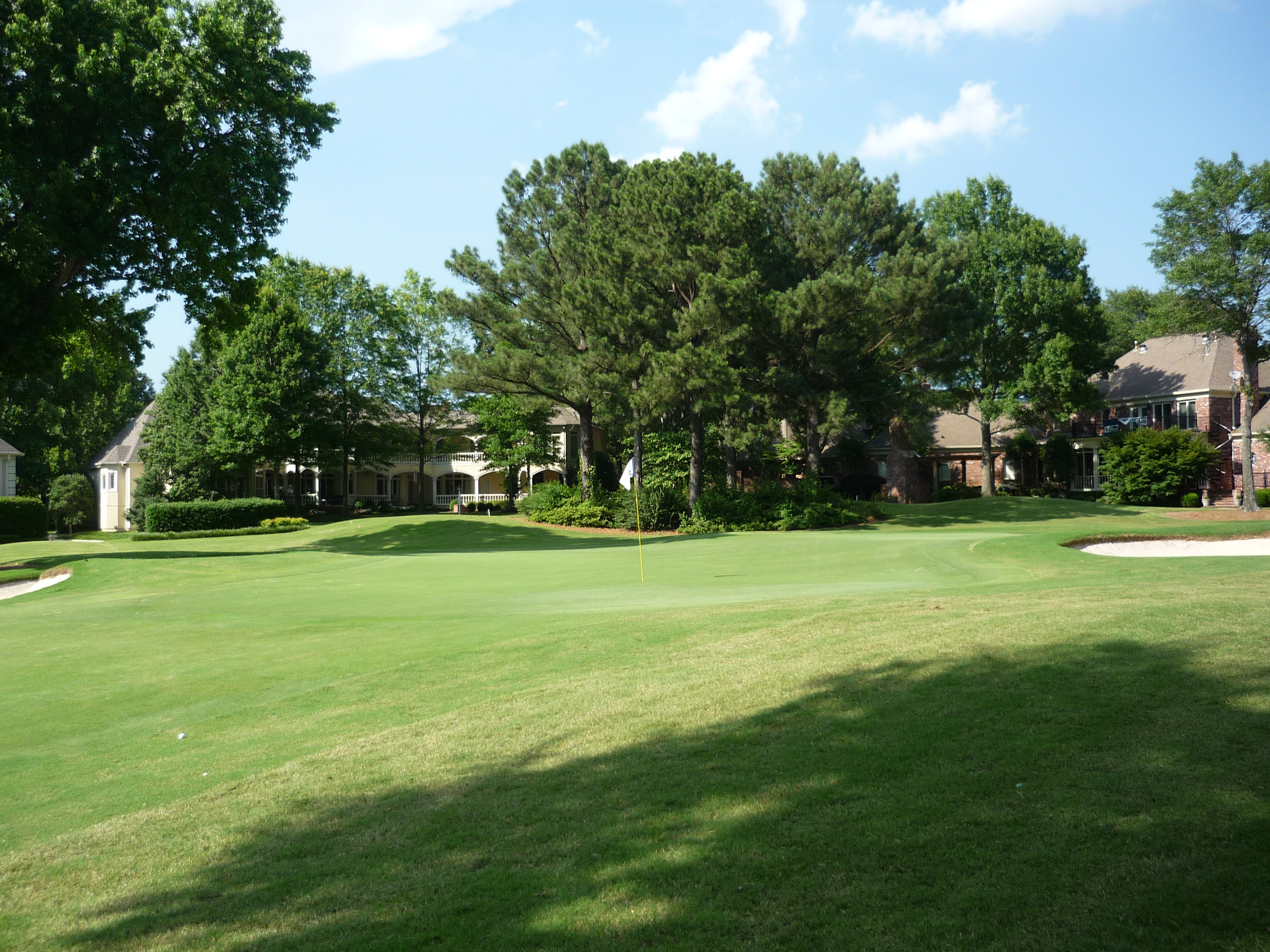
Hole 11 – 141 yards – Par 3
At this point, I was starting to think the one-shot holes might be my favorite part of the course. This shot requires no more than a short iron, but water surrounds the green.
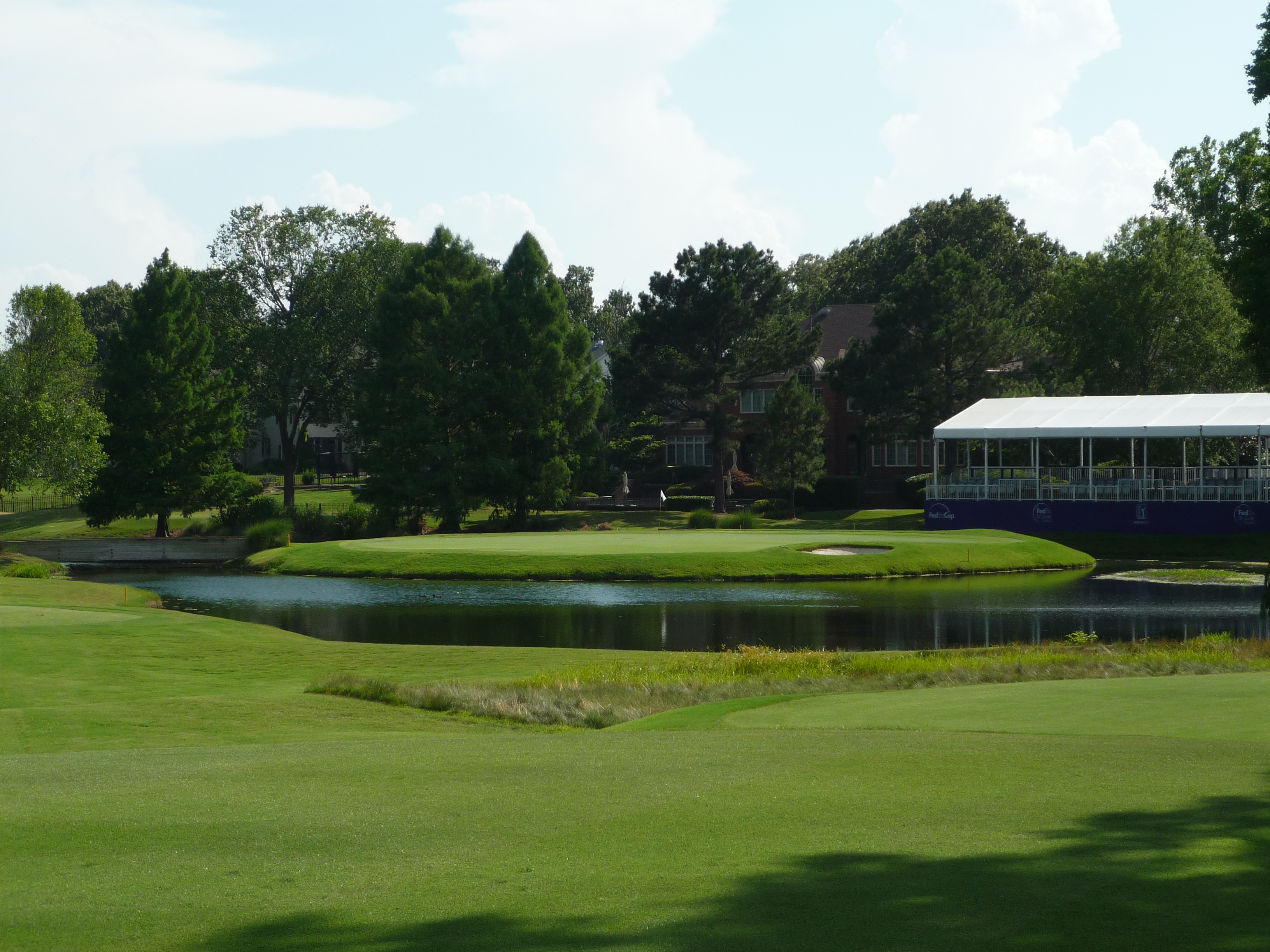
This view gives you a good idea of the size of the target. Shots just long can be held back from the water by two bunkers.
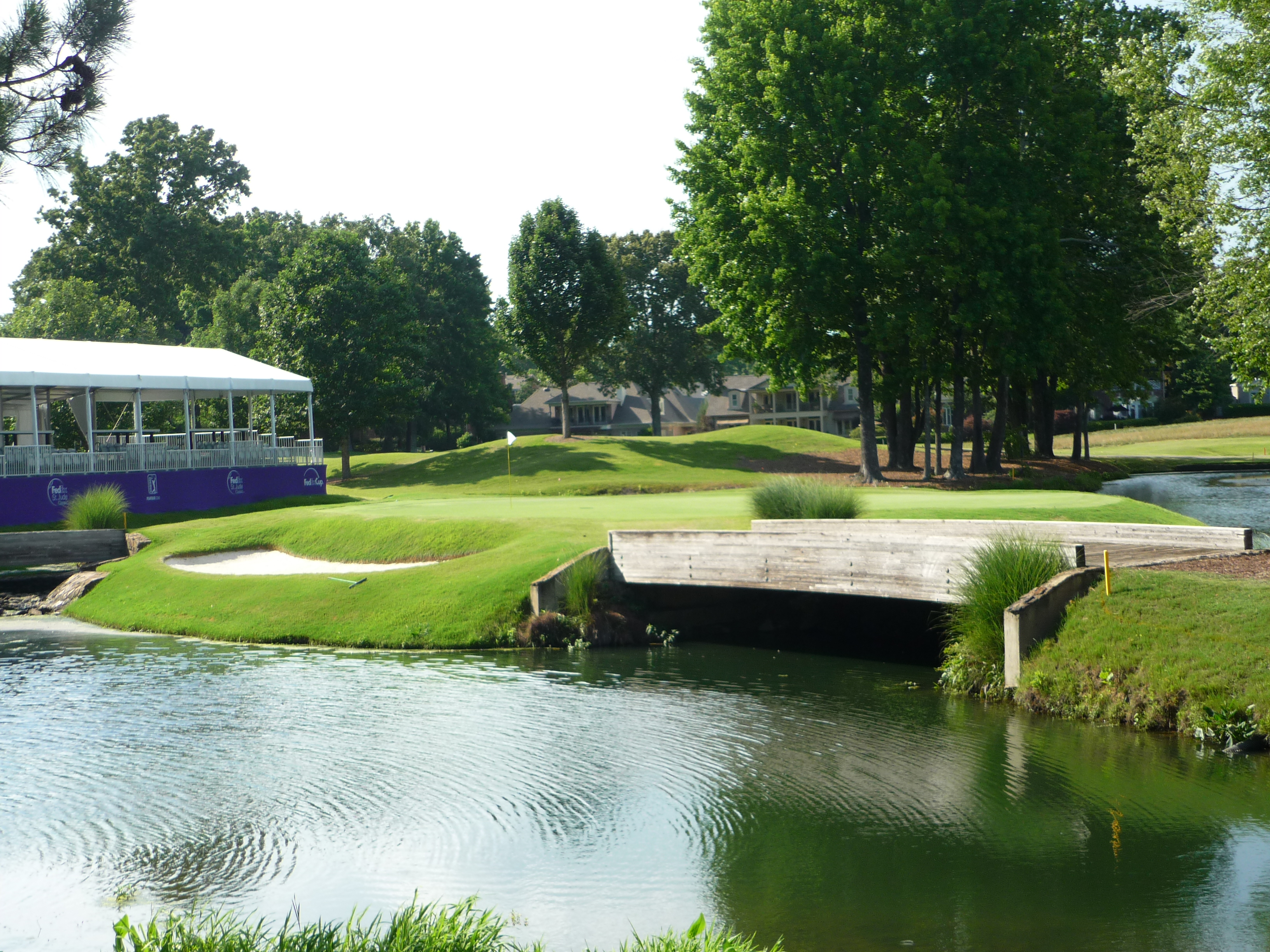
Hole 12 – 370 yards – Par 4
Slicers beware on this tee shot. The safe line is towards the bunker on the left as the water continues all the way to the green.
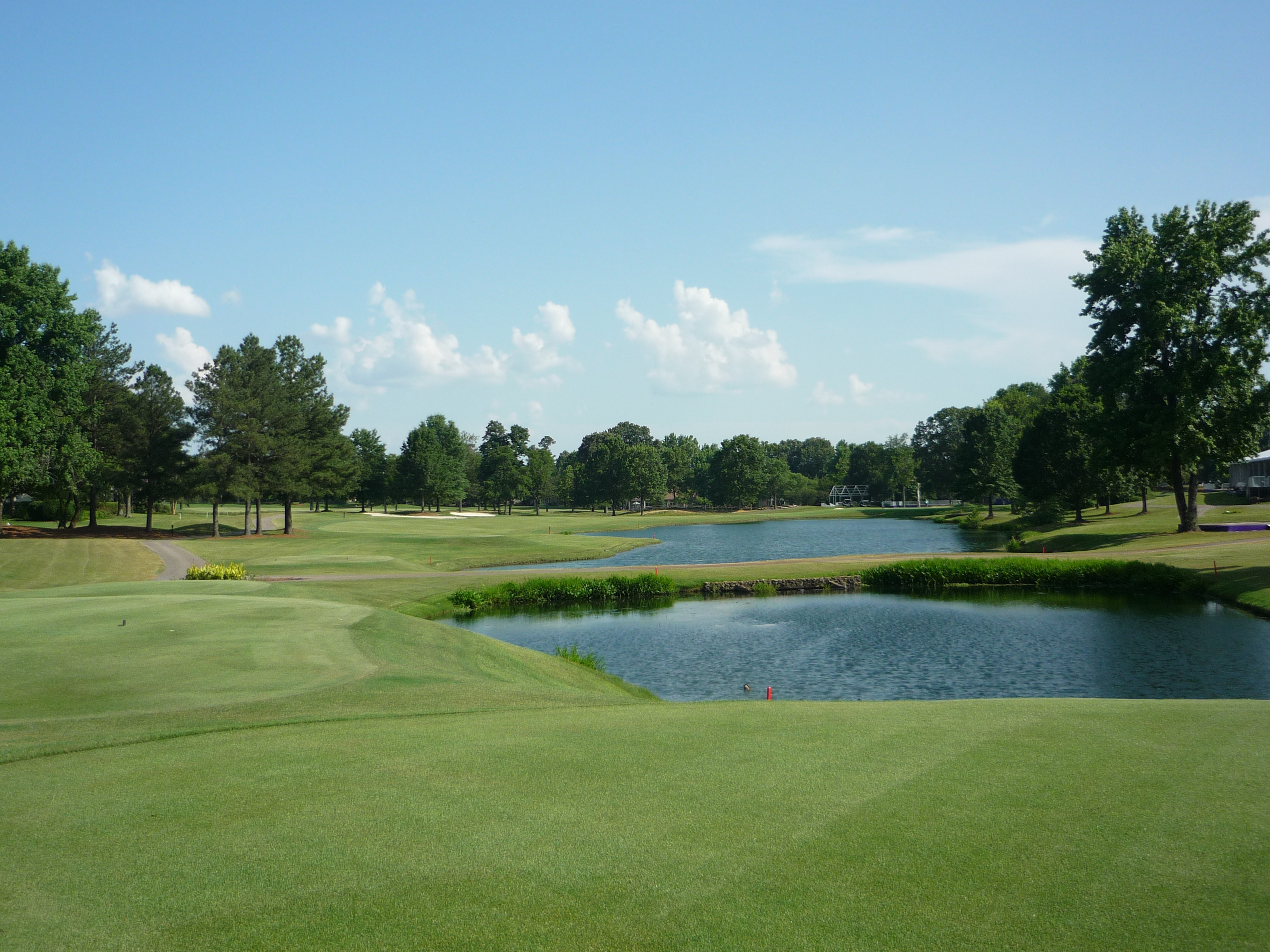
I got a little squirrely off the tee, but below is the view from a good tee shot. Don’t be short!
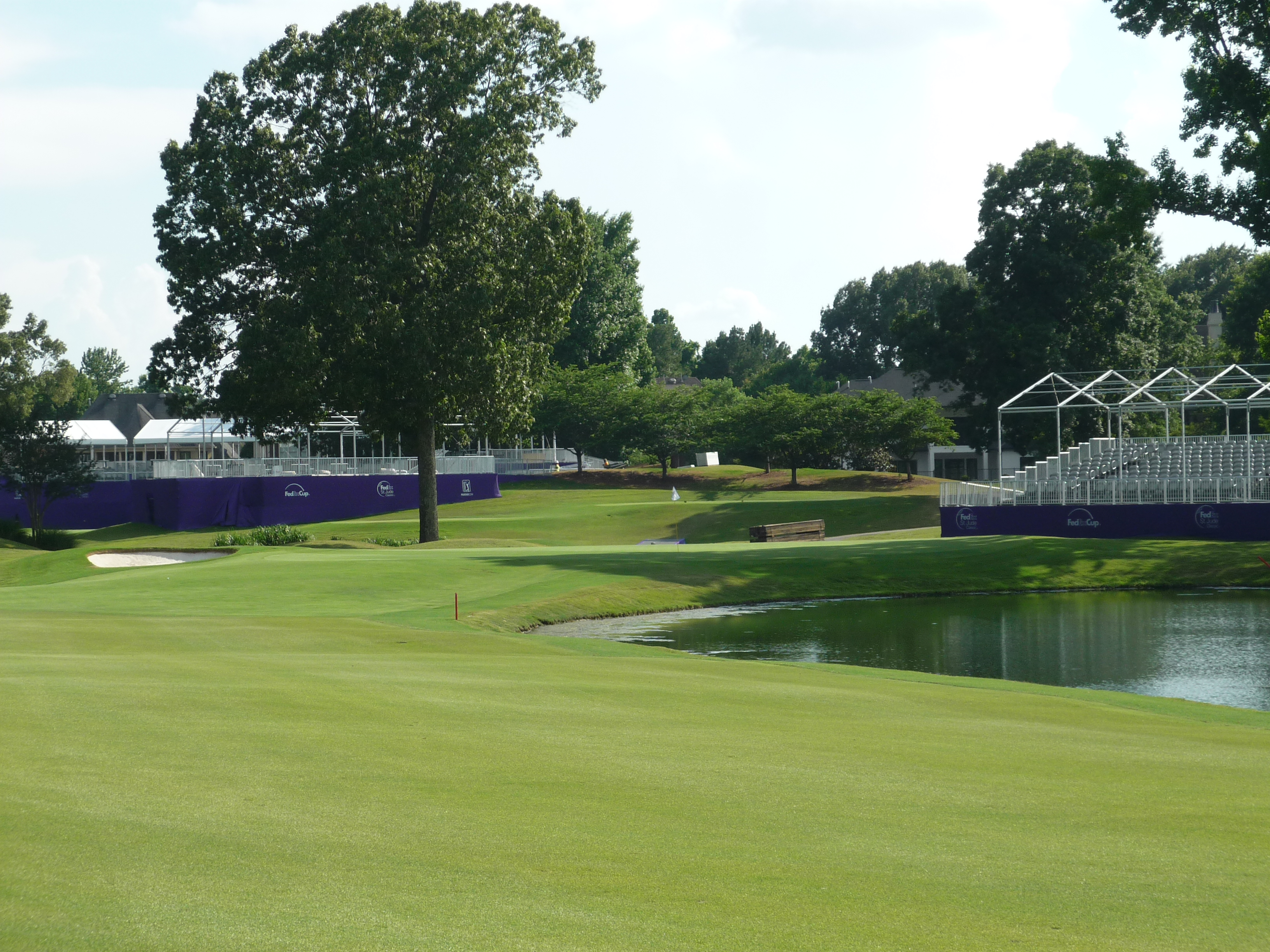
Here is a look at the putting surface from the left.
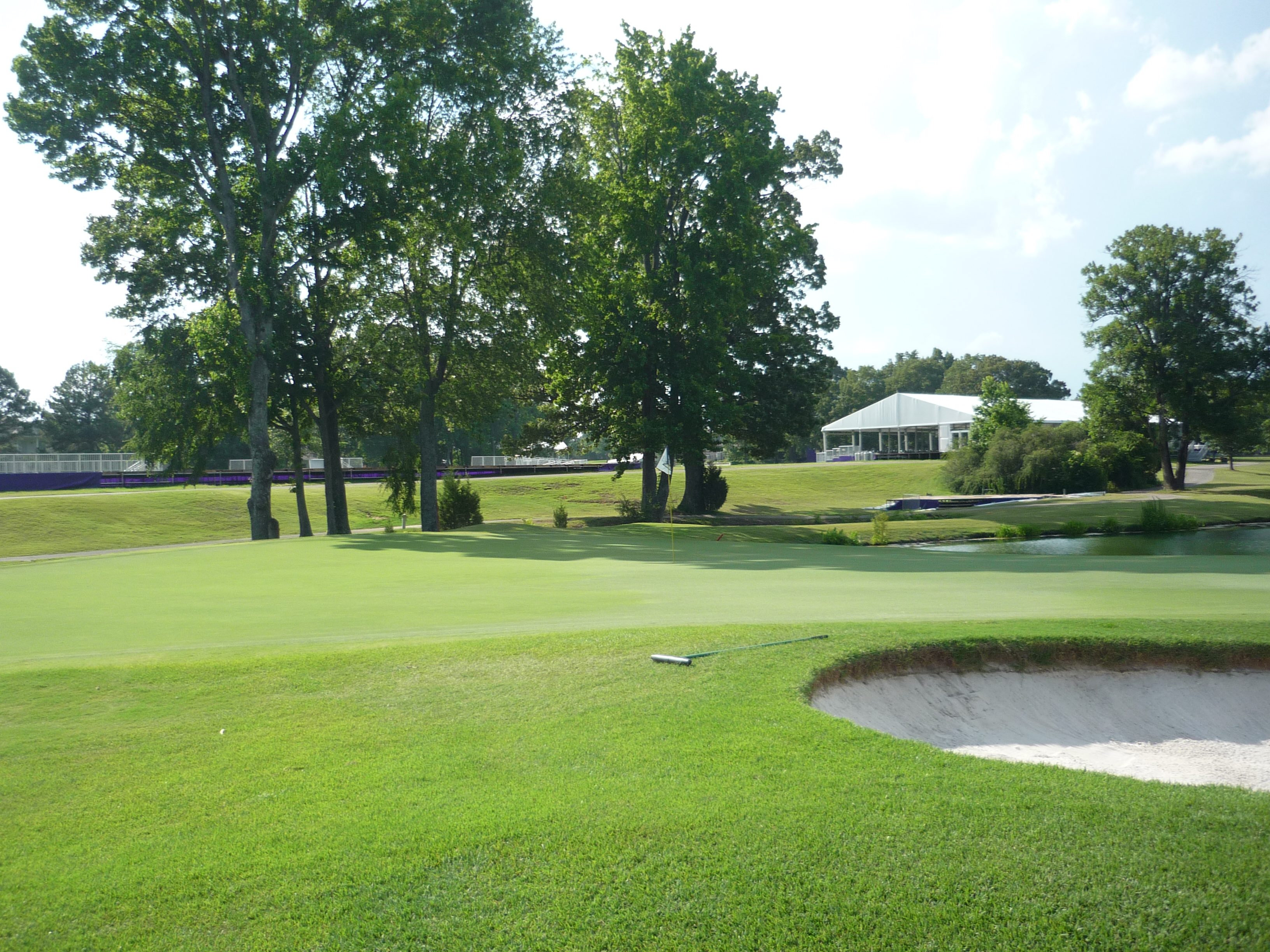
Hole 13 – 425 yards – Par 4
Another hole on the long side and I am starting to see why Dustin Johnson plays well here. Bunkers line both sides of the landing area so play the shot that gets you in the short stuff.
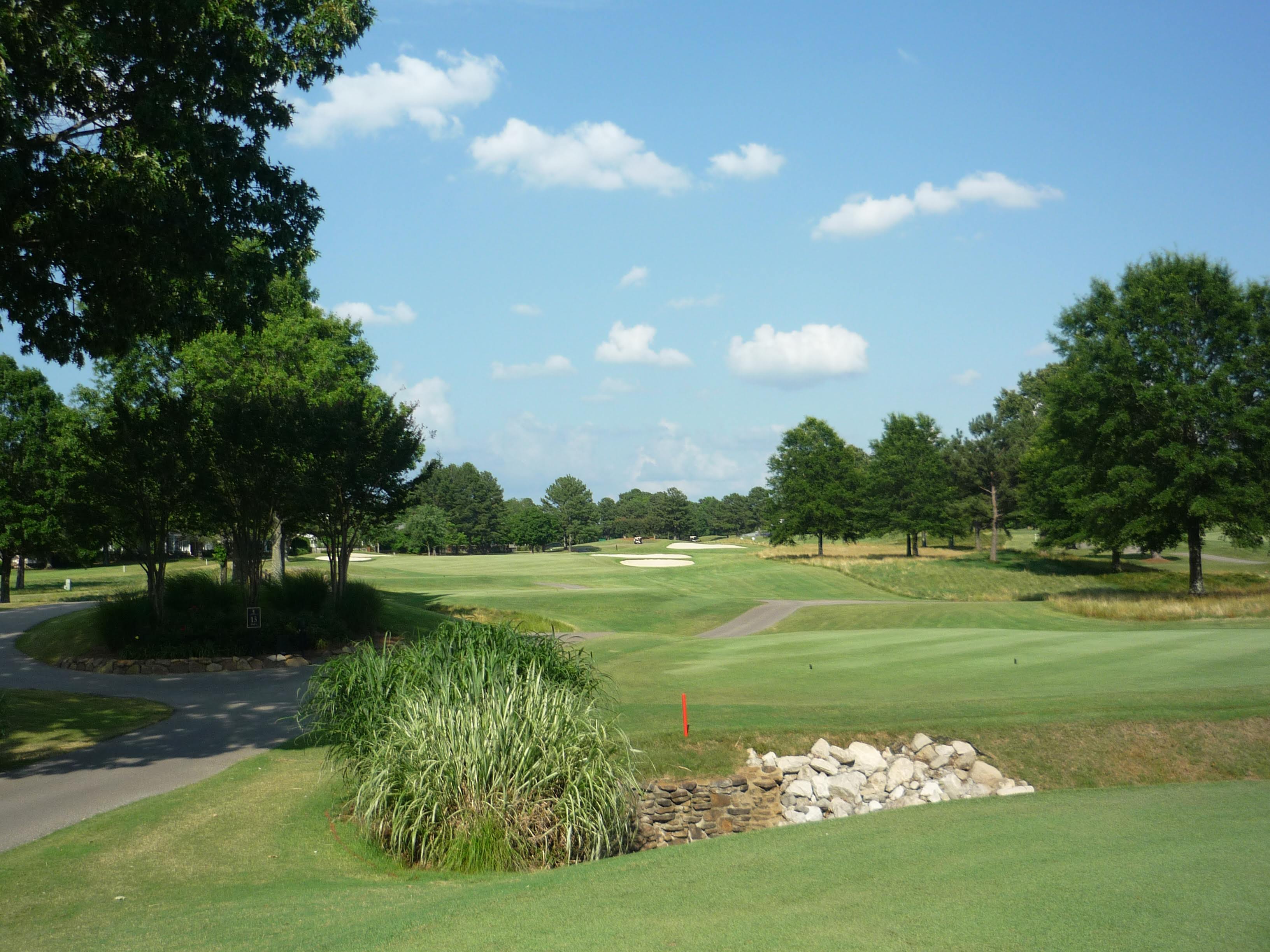
 Be sure to take a little more club on the approach due to the grade.
Be sure to take a little more club on the approach due to the grade.
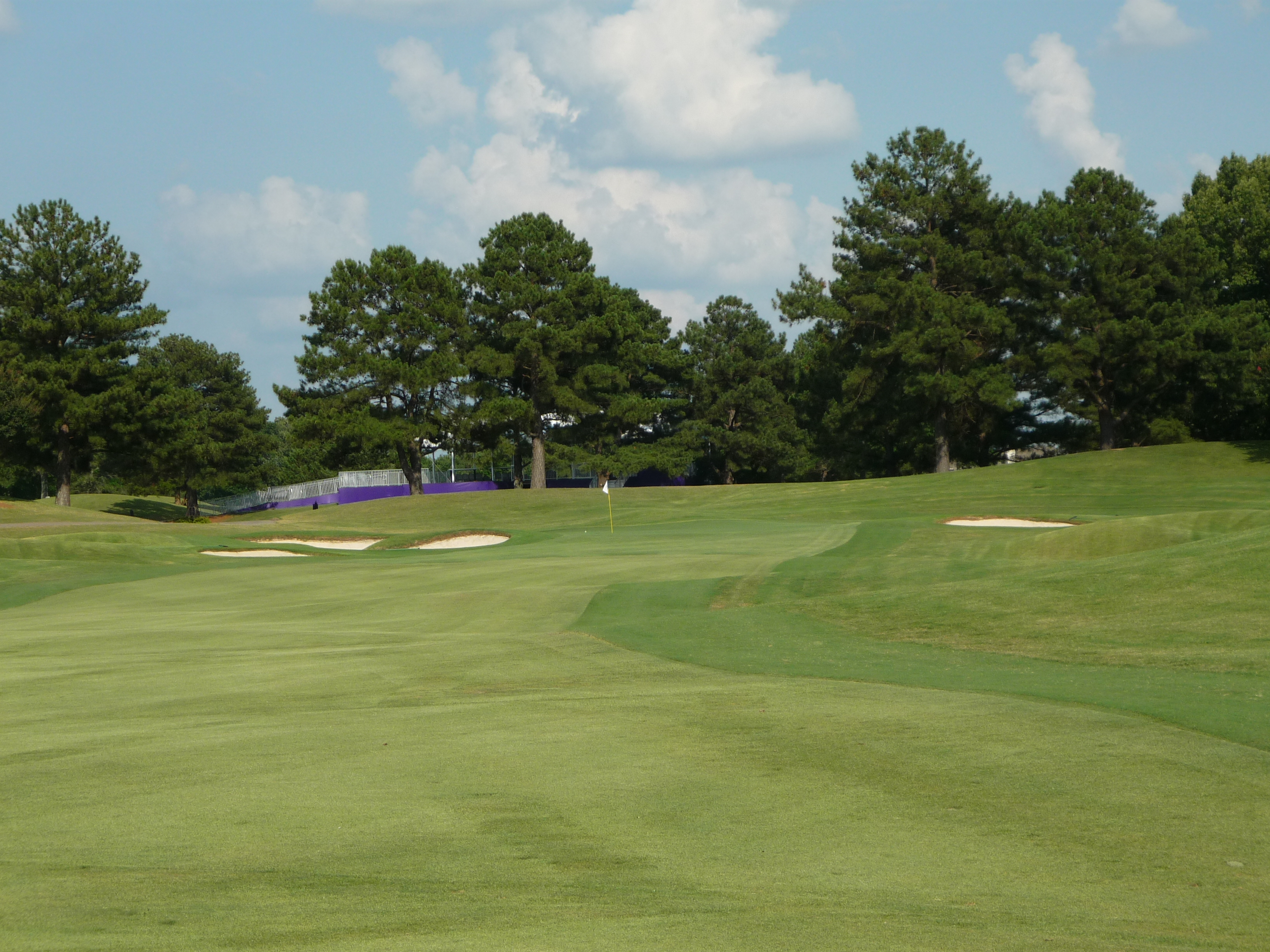
The green is pretty large which is helpful if you’re coming in with a long club.
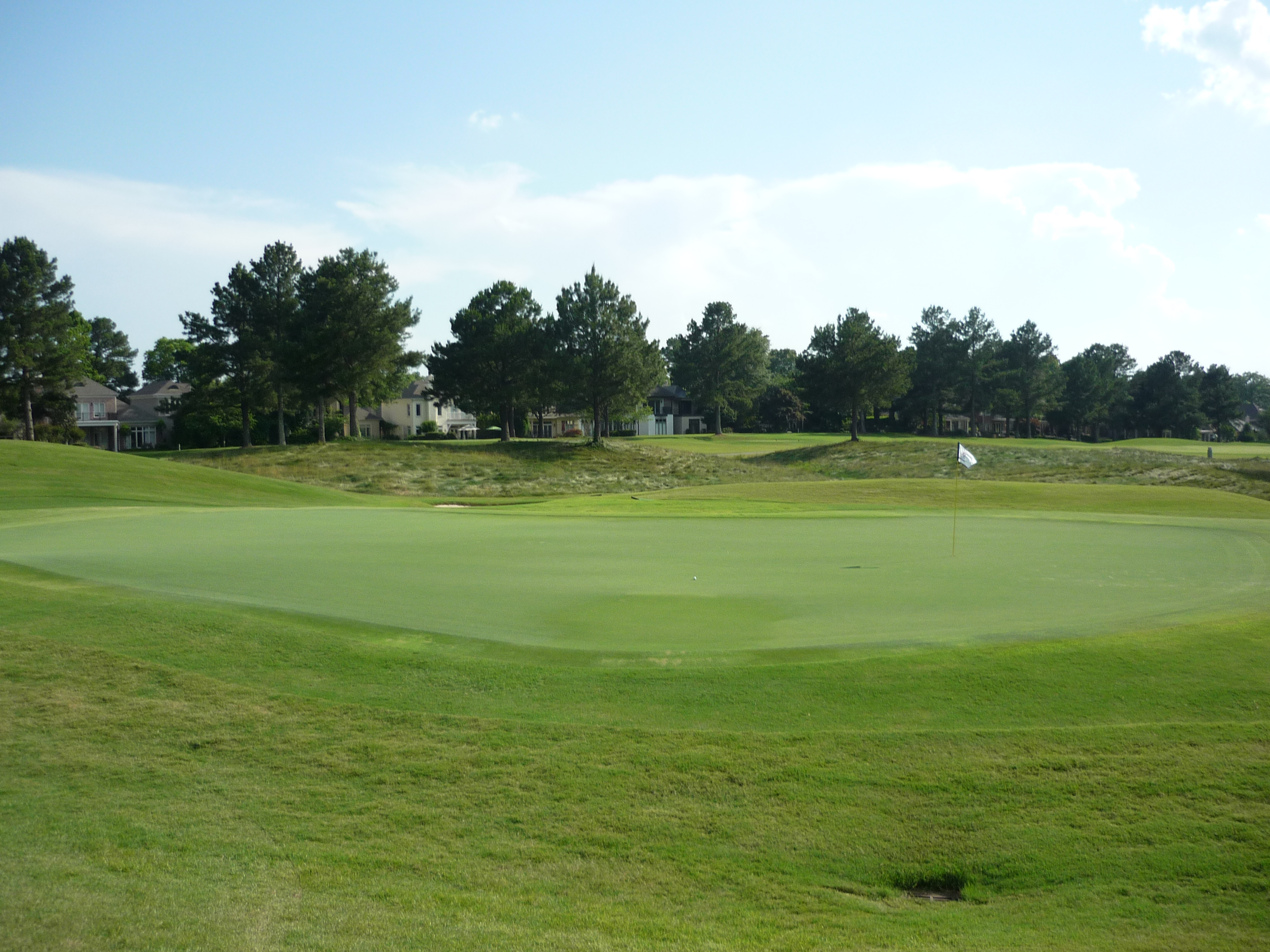
Hole 14 – 195 yards – Par 3
The tee shot here is very difficult. The heat may be getting to you, as it was me, and a lazy swing to the right will result in a splash. If you can fade it, play the ball at the bunker and work one onto the green.

Hole 15 – 350 yards – Par 4
Club selection on the tee is crucial. You will want to position yourself to have a look at the green, but you don’t want to go through the fairway.
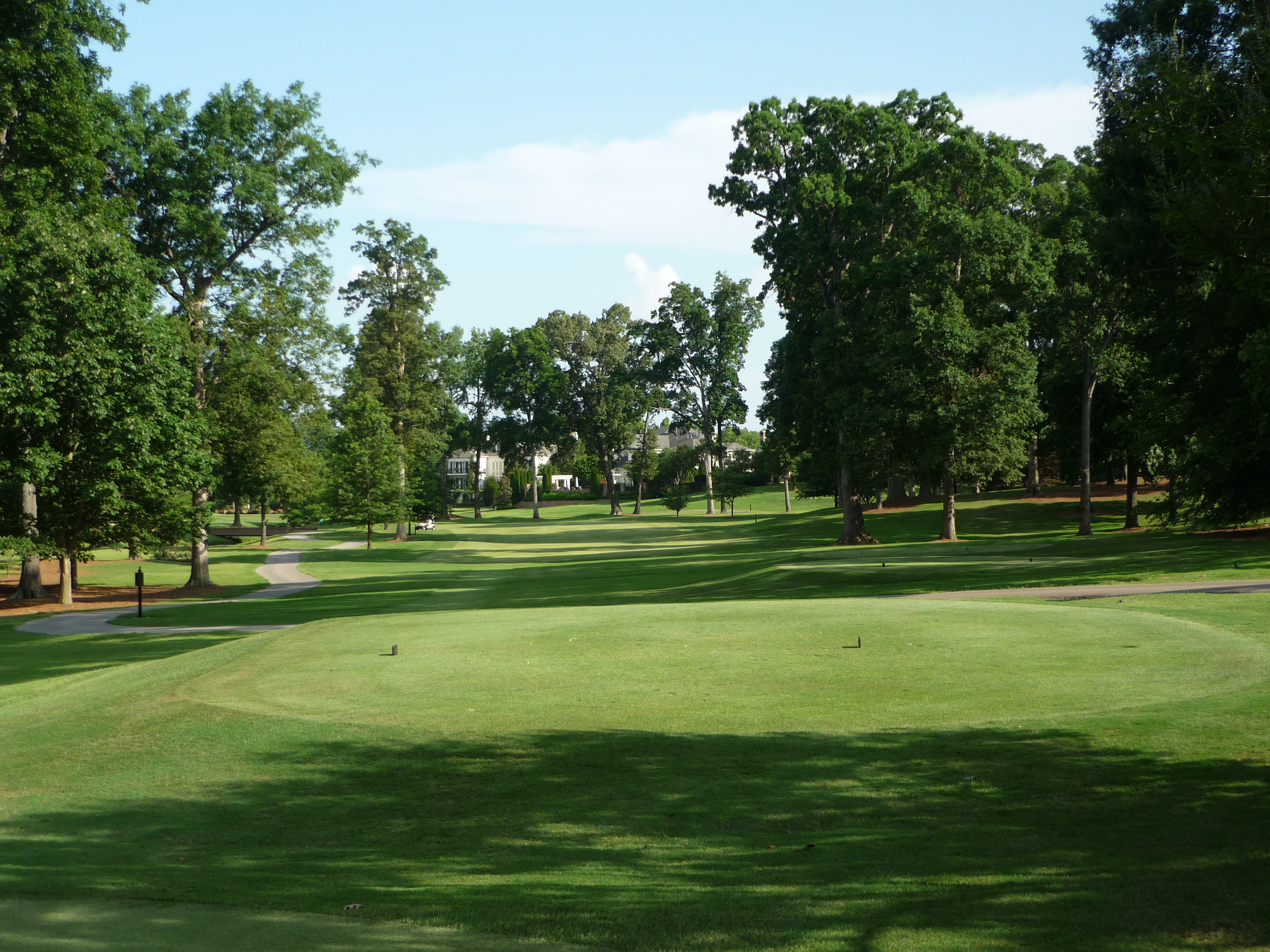
As the hole bends the green comes into view as does the hazard. The shot should be no more than a short one so the pin in the target.
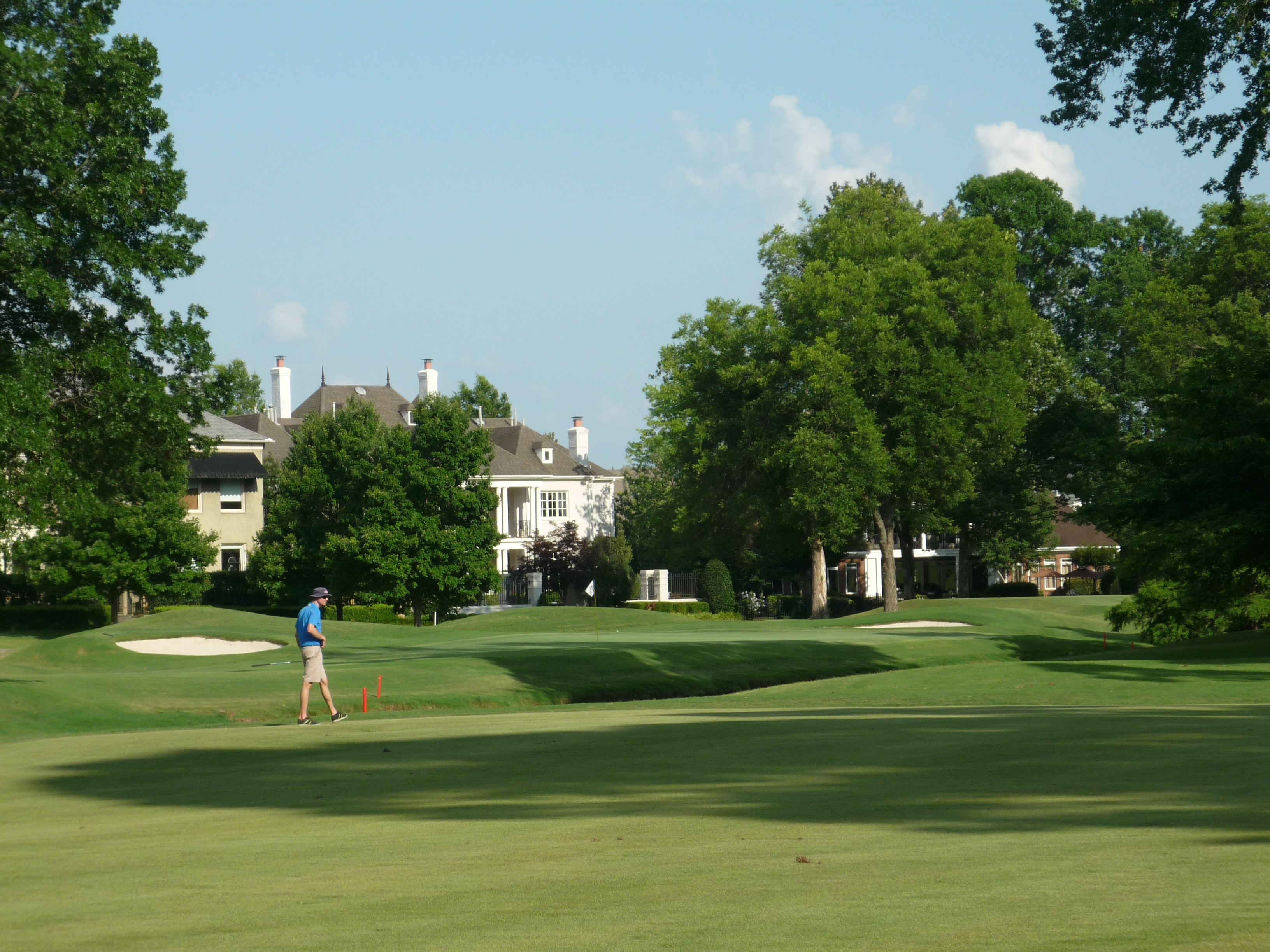
The green is flanked by some challenging bunkers.
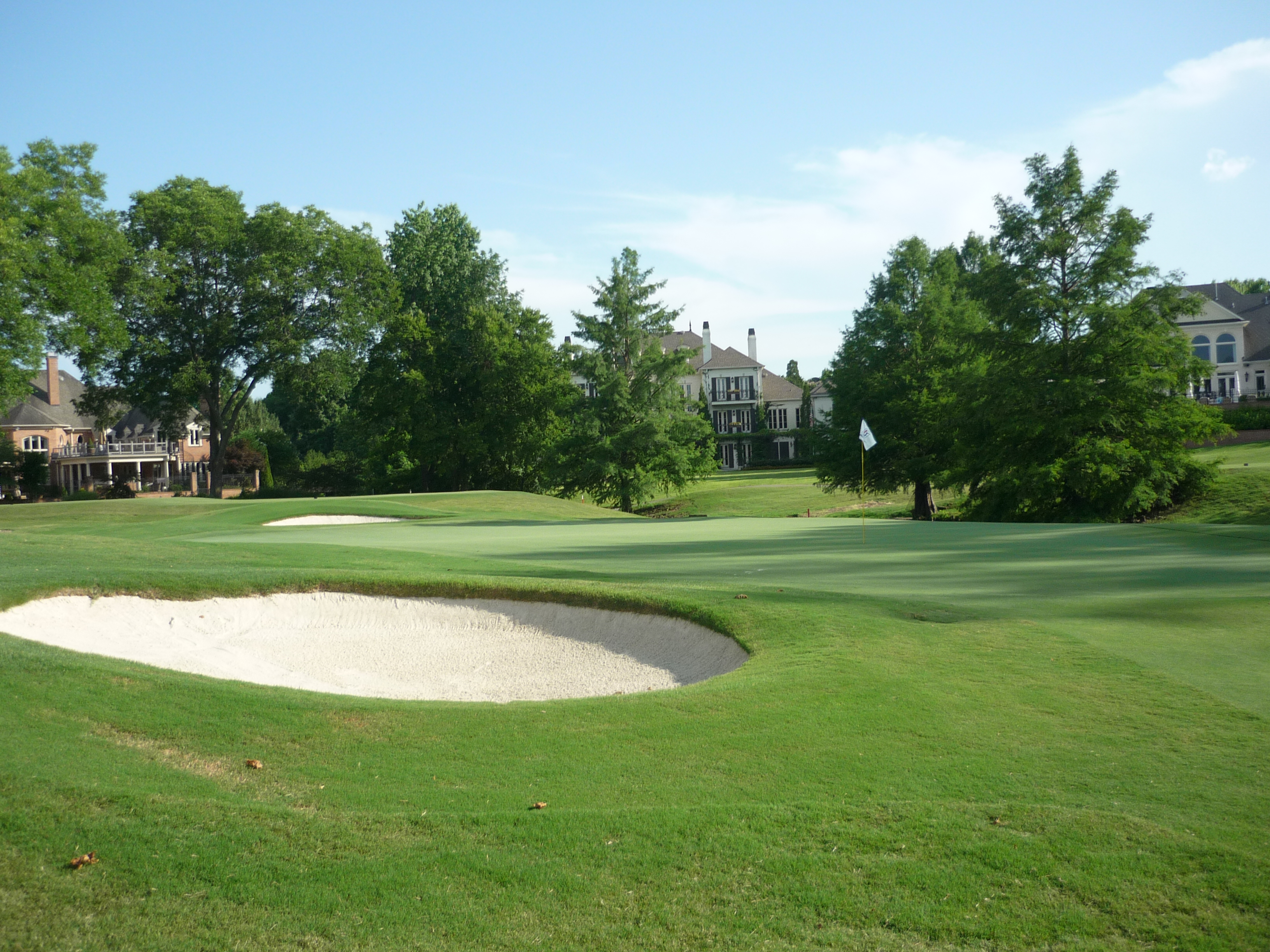
Hole 16 – 496 yards – Par 5
For non-bombers, the tree on the left makes a draw the preferred shot shape. A good tee shot here is important to set up a chance to get home in two.
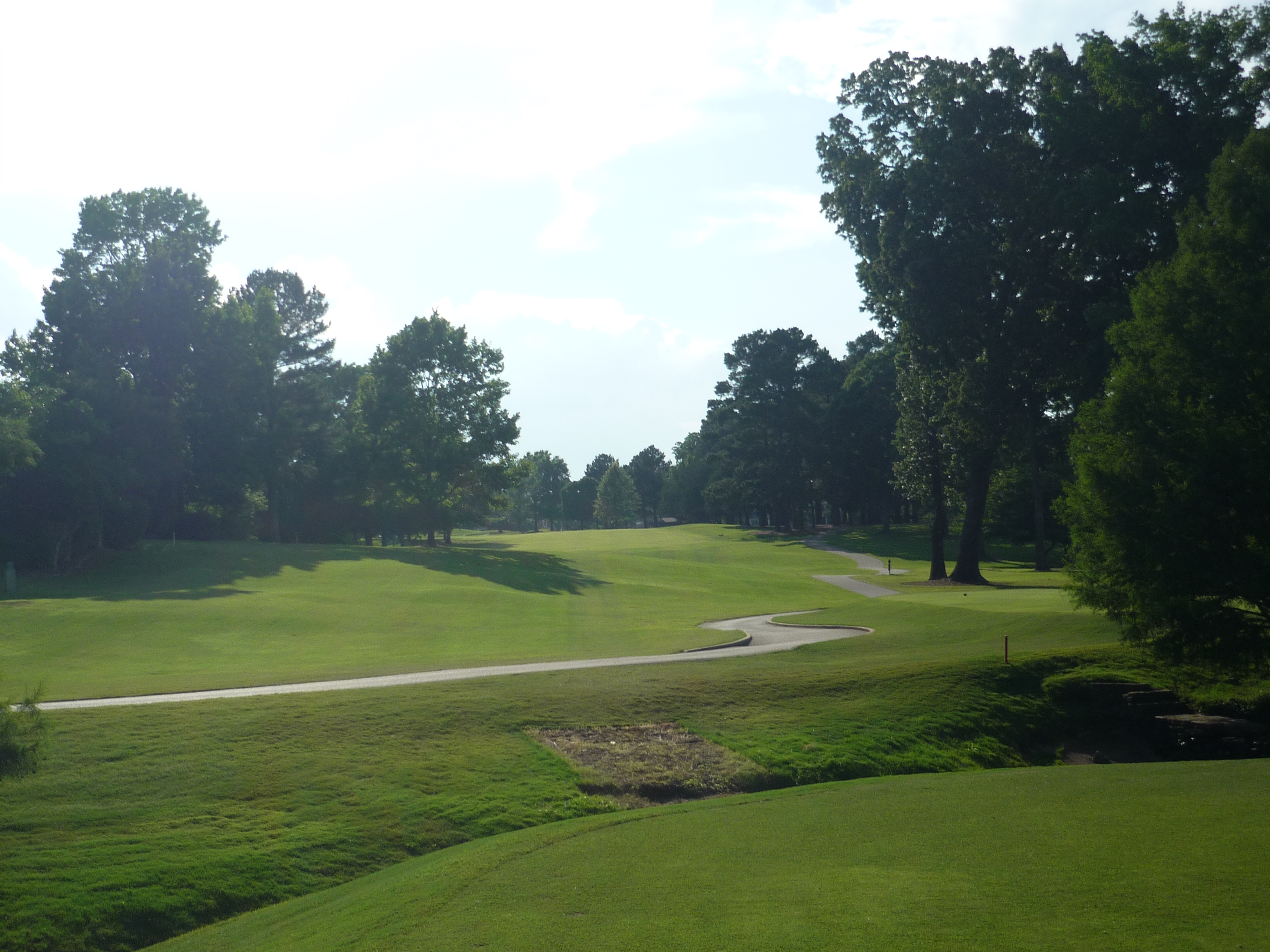
Below is a look at the second shot.
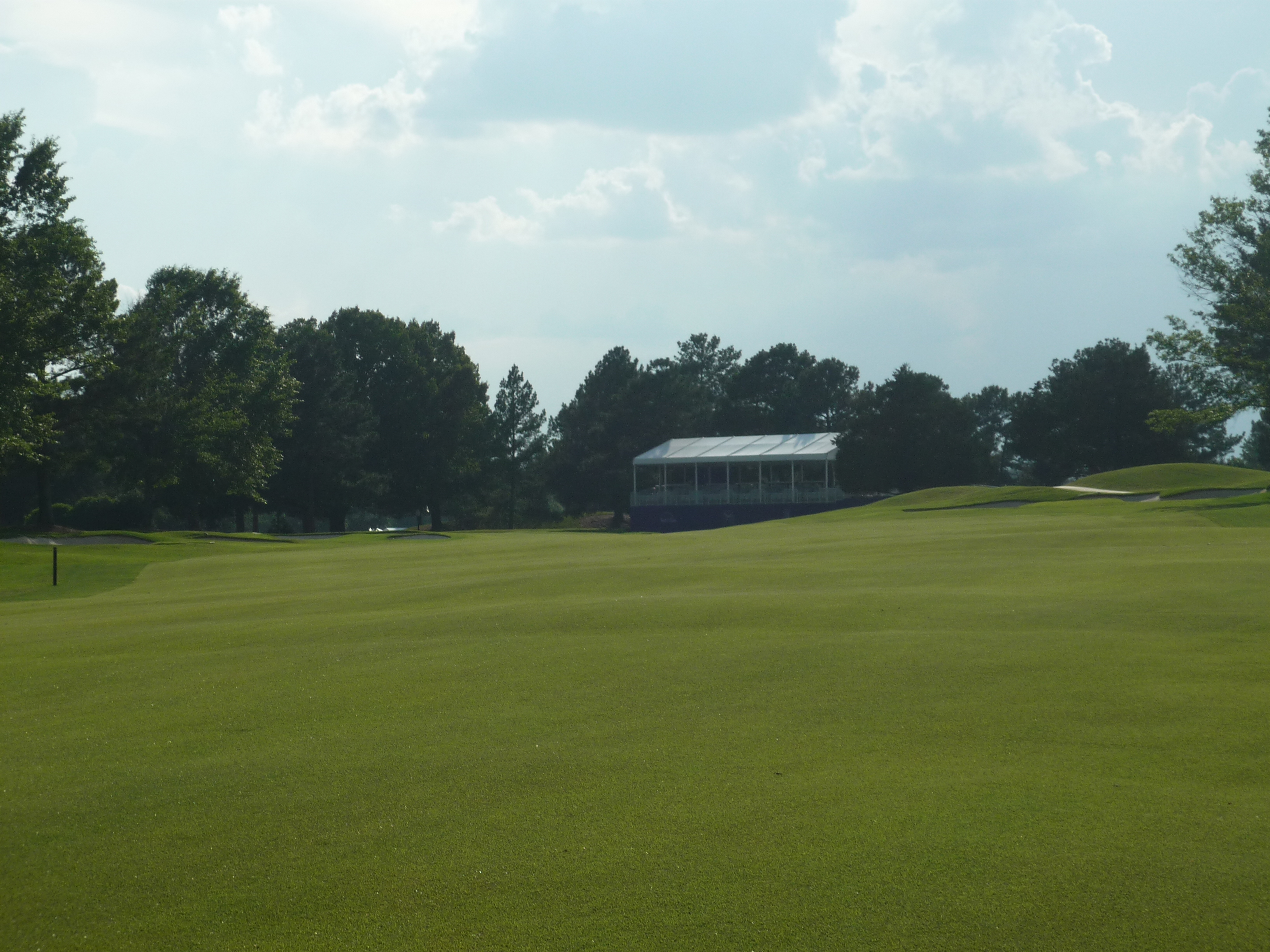
I couldn’t get home in two, but below is a look at traditional layup yardage. There is plenty of sand to avoid.
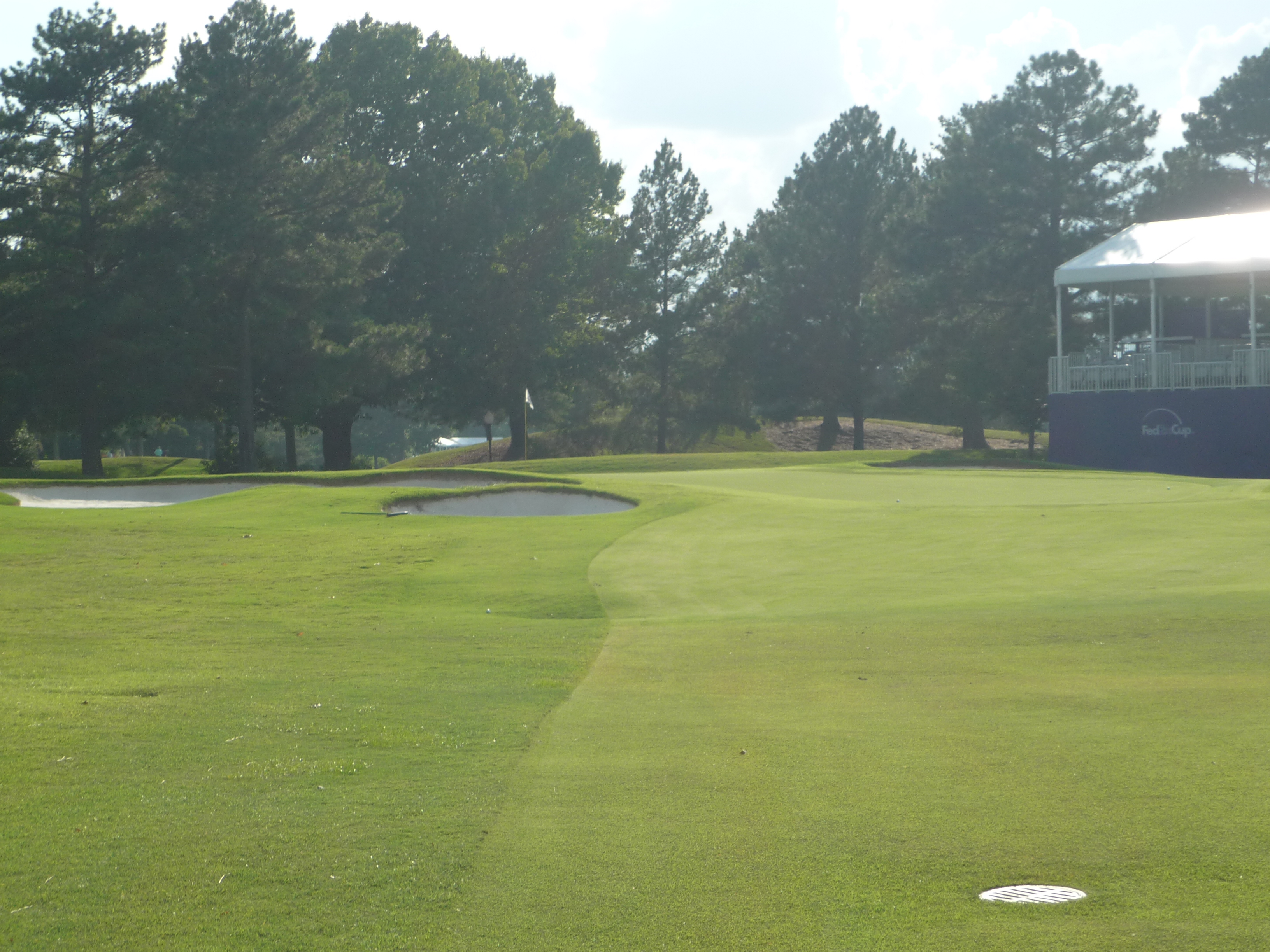
The shape of this green is a bit unusual, but I appreciated the variety. It also helps when you drain a bomb. My ball was the one on the right and it dropped from about 60 feet!
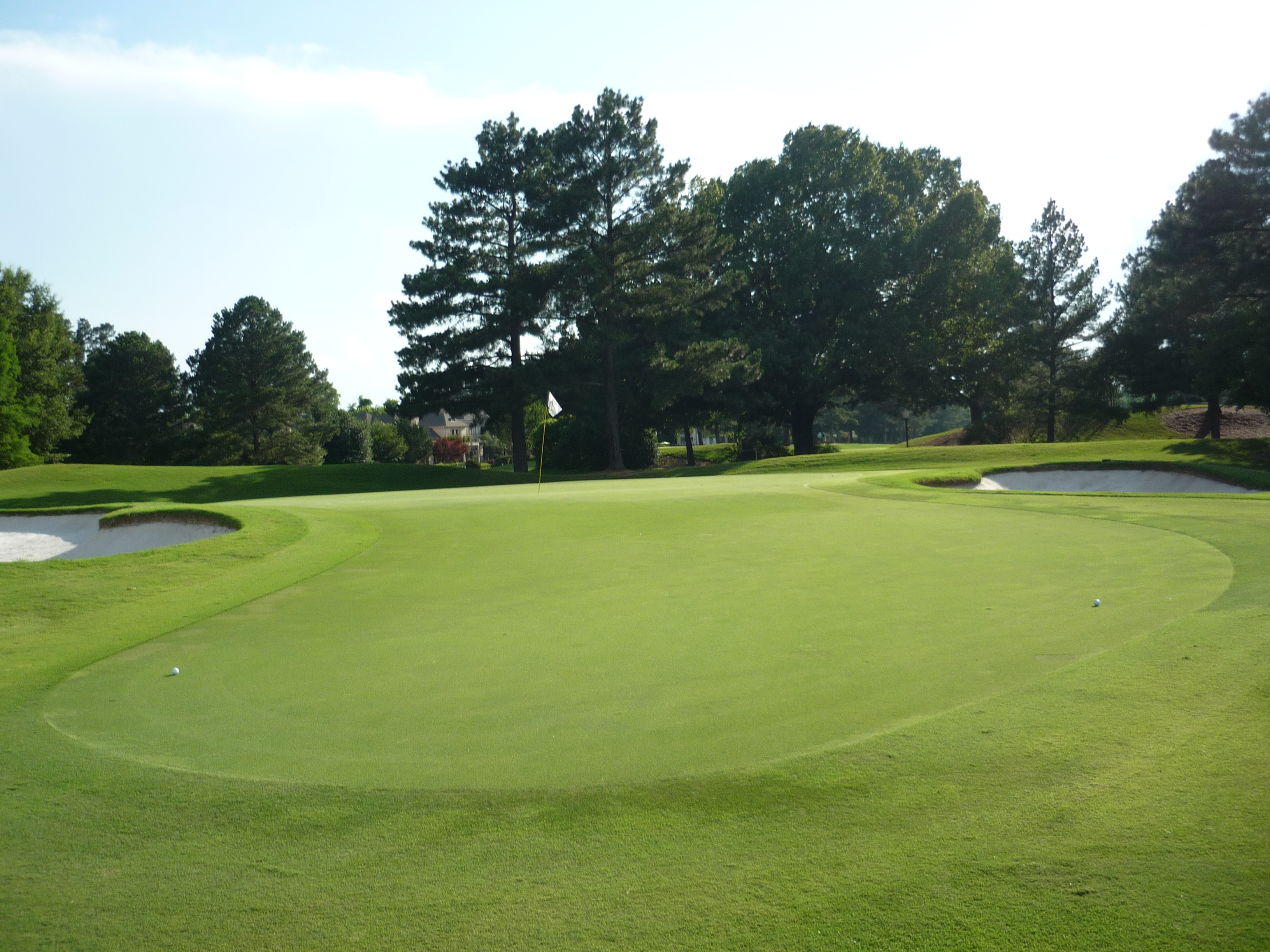
Hole 17 – 450 yards – Par 4
The penultimate hole is a test and worthy starter to the finishing two-hole stretch. The fairway plays downhill so a big drive is possible and necessary.
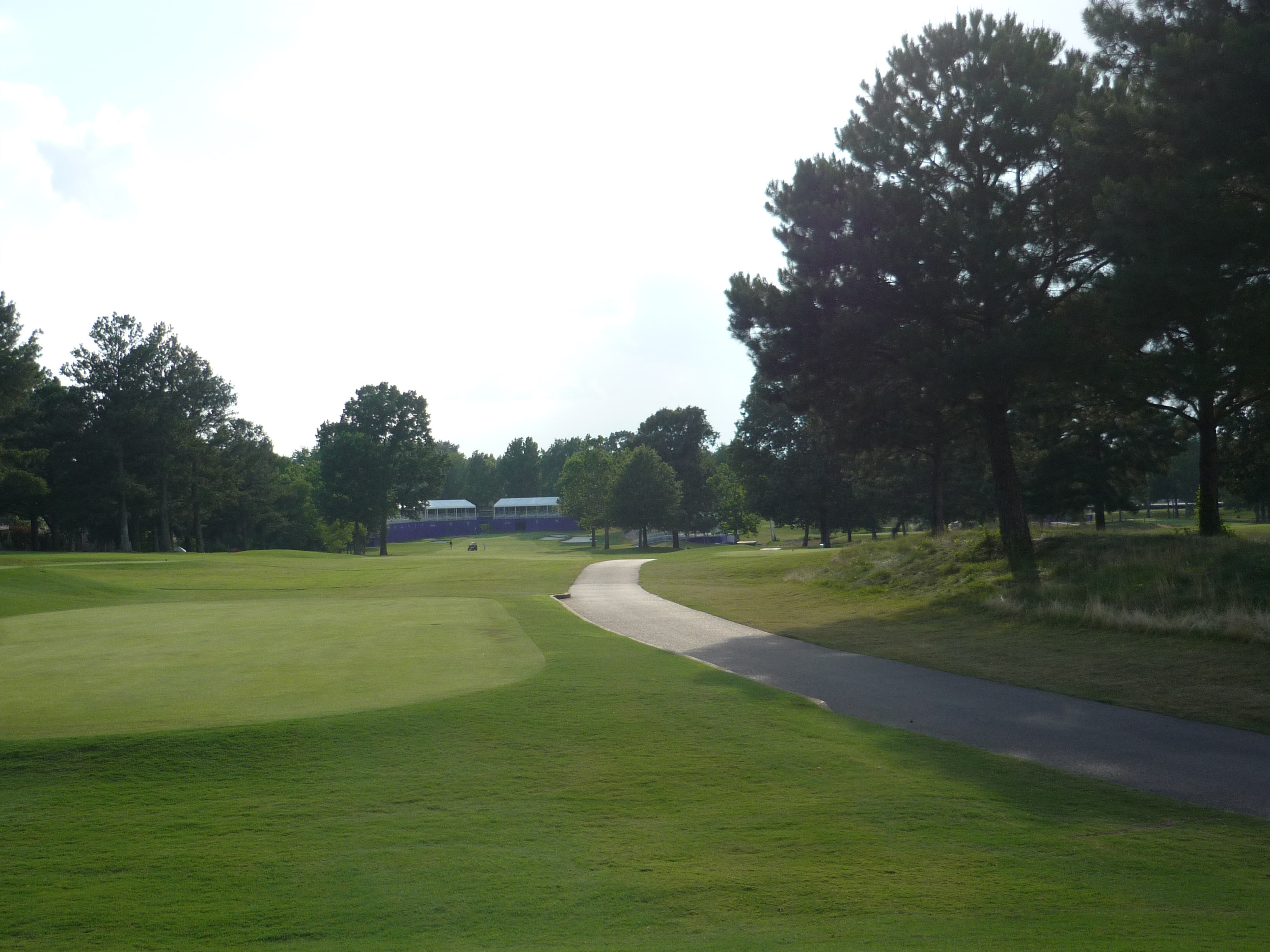
The second shot plays back uphill to the green. It plays like an arena with the stands still up. Bunkers guard the front sides of the green.
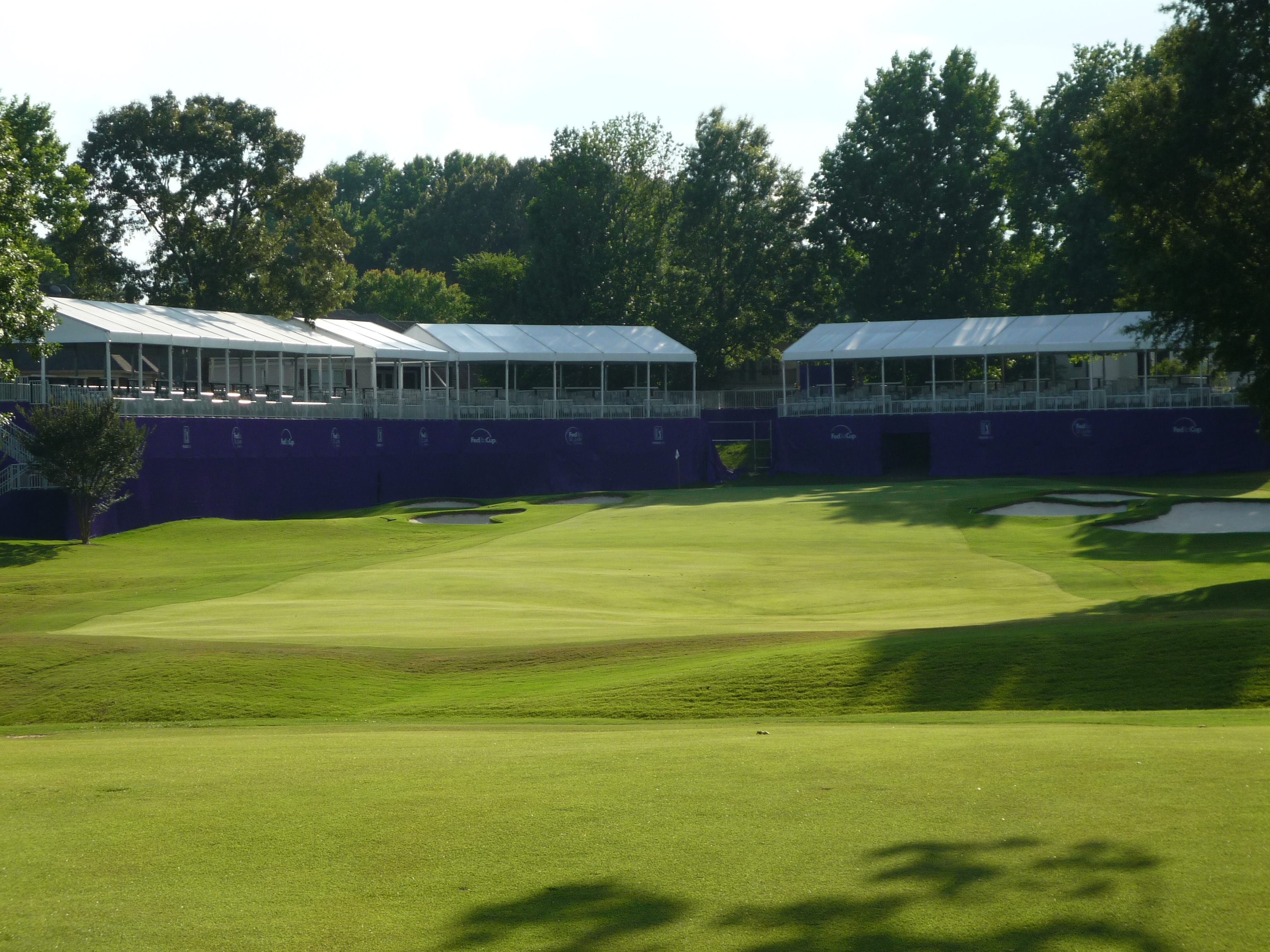
This view from the right highlights the collection area. There can be some tough up and downs from there.
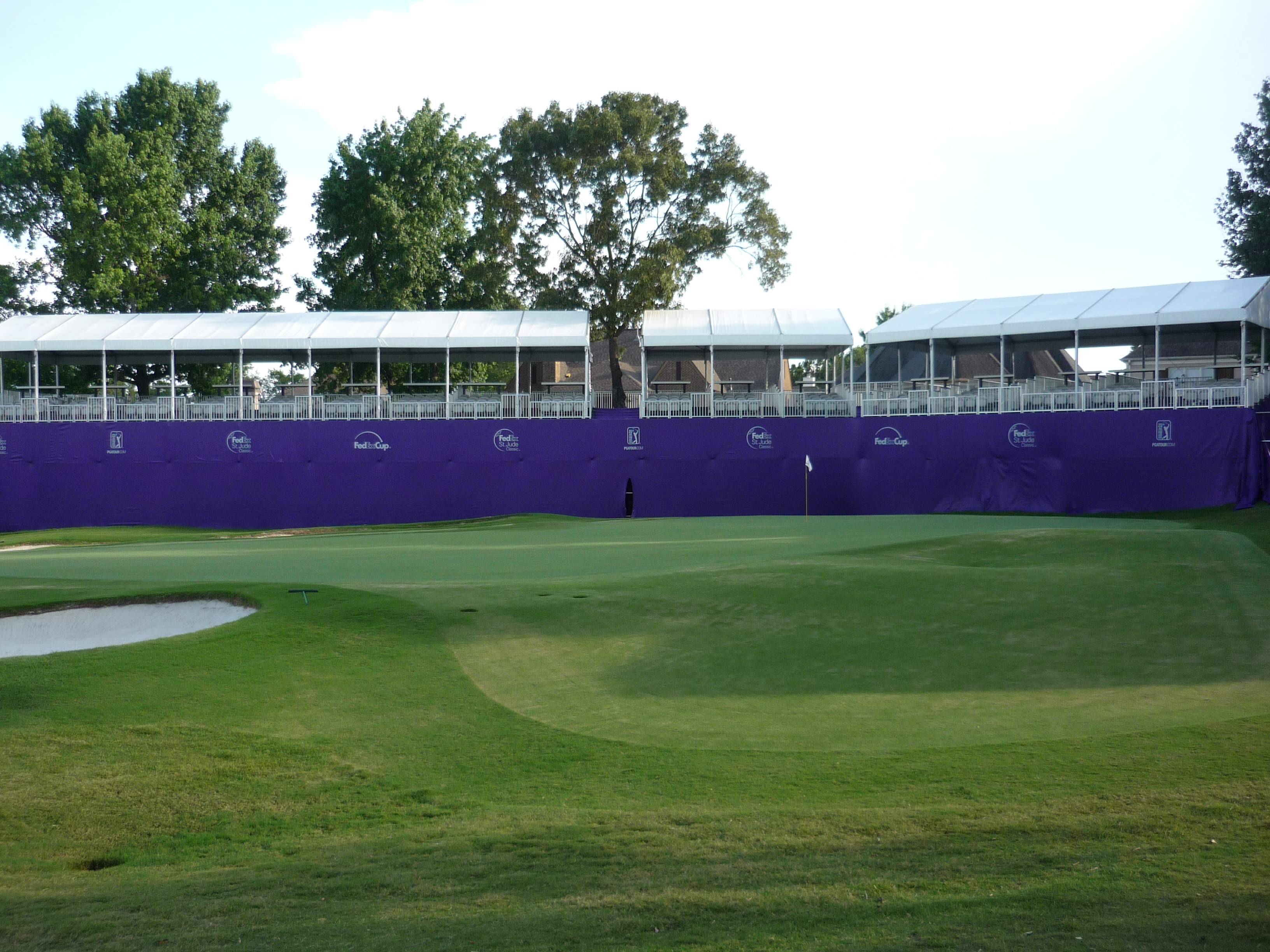
Hole 18 – 438 yards – Par 4
The finisher is no cakewalk. Water is in play on the left and bunkers await on the right. A steel resolve is needed here for the pros with a tournament on the line.
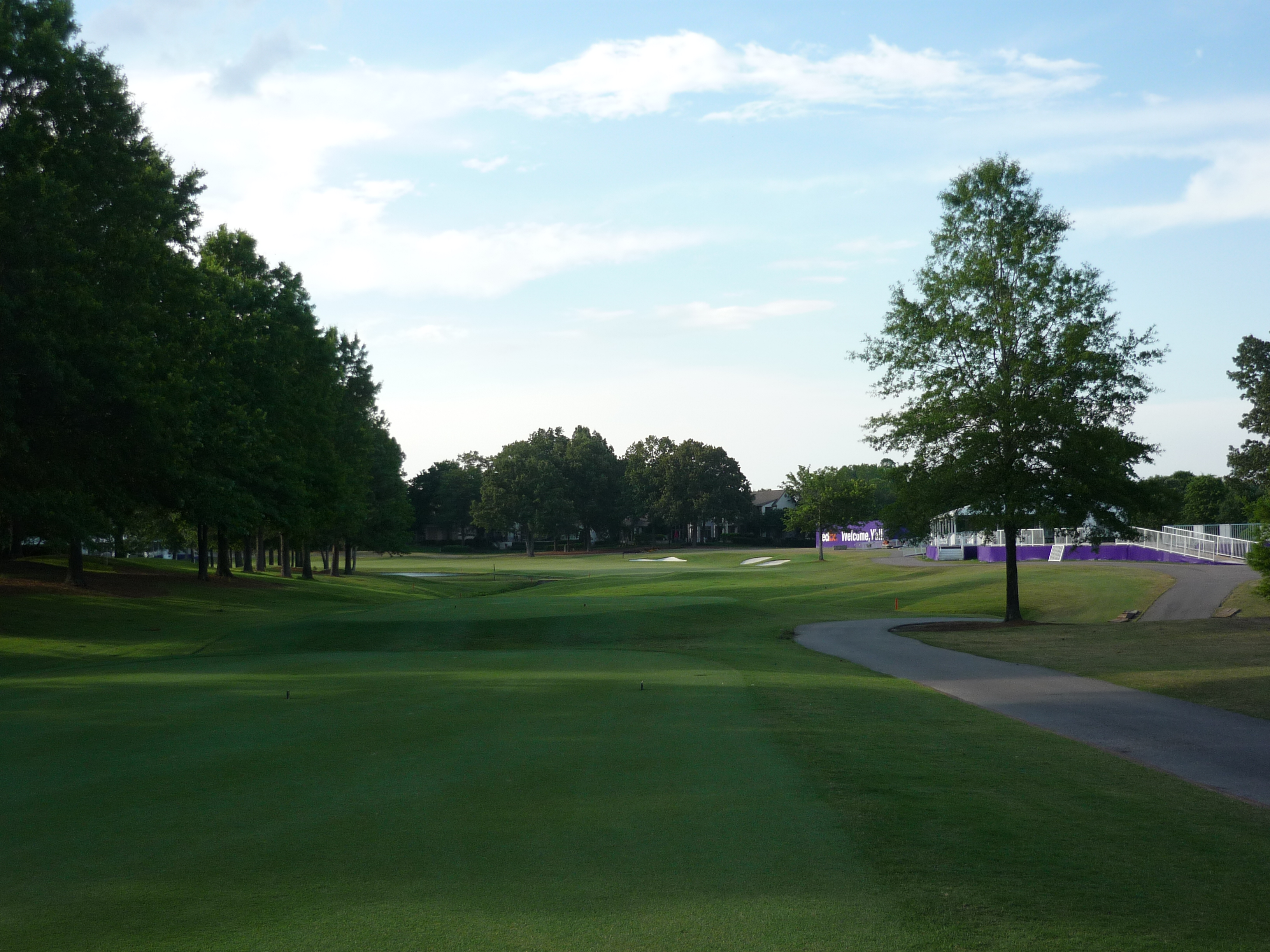
Long drives will make the water less of a problem on the approach shot. There are some deep bunkers on the right for those trying to bail out away from the water.
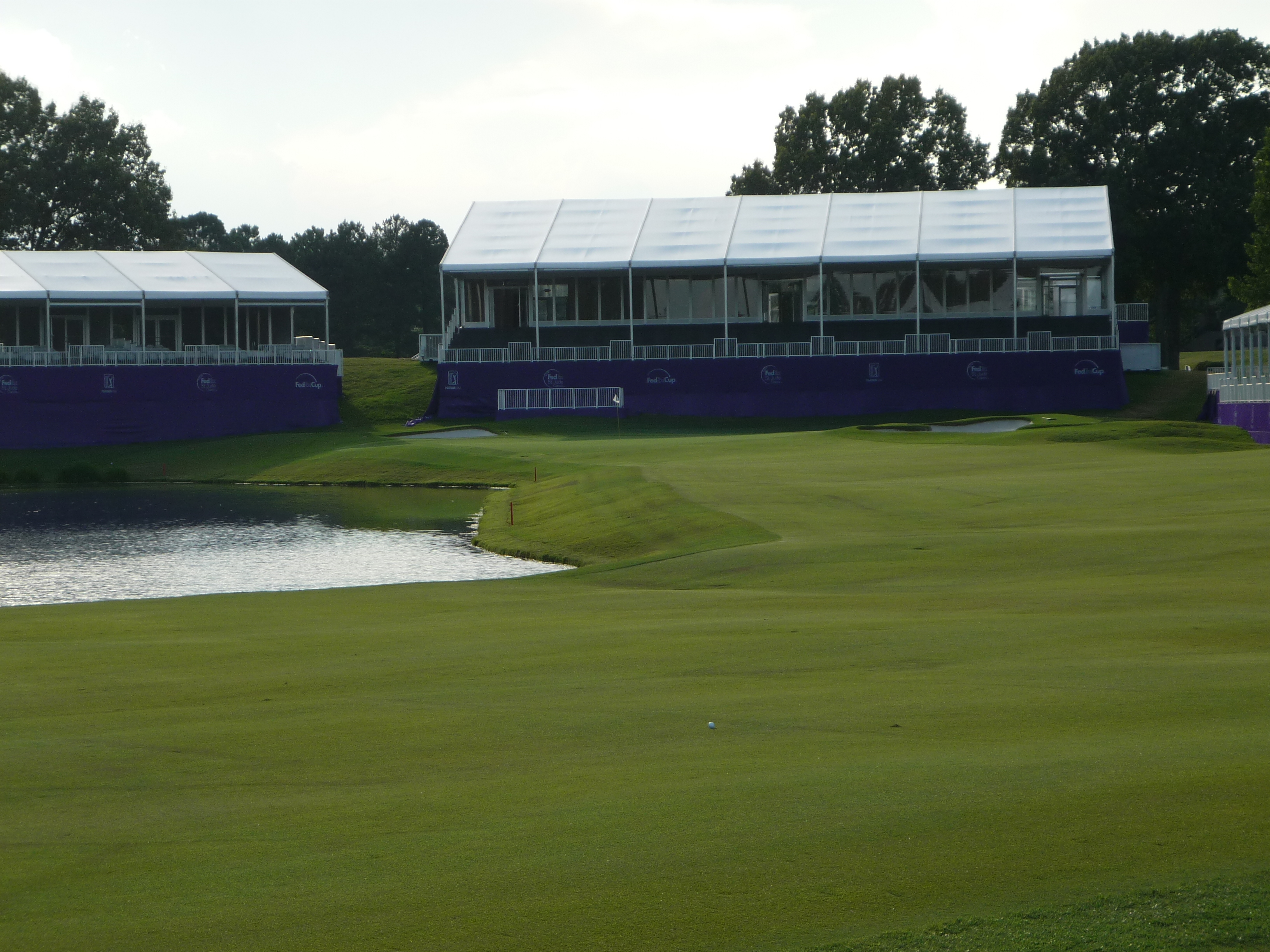
In addition to the sand, the large collection area is below. I’d hate the thought of chipping back towards the water with serious cash on the line.
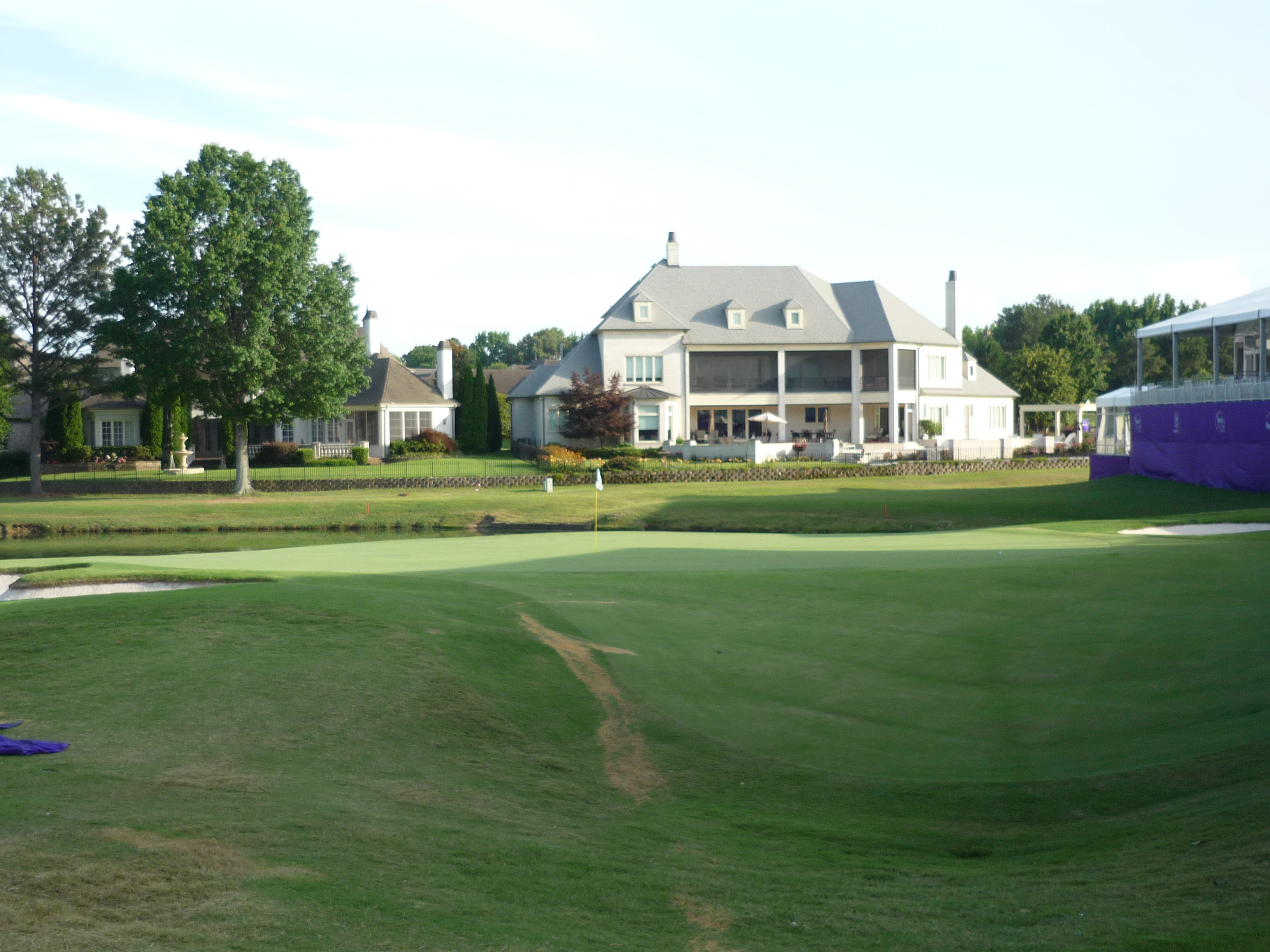
It was thrilling to get to play the course so close it hosting the FedEx St. Jude Classic. The conditions were awesome and seeing the grandstands was an added perk.
I would recommend trying to play in the spring or fall though. The summer heat in Memphis is unrelenting. I was sapped by the back nine. Be sure to hydrate!
